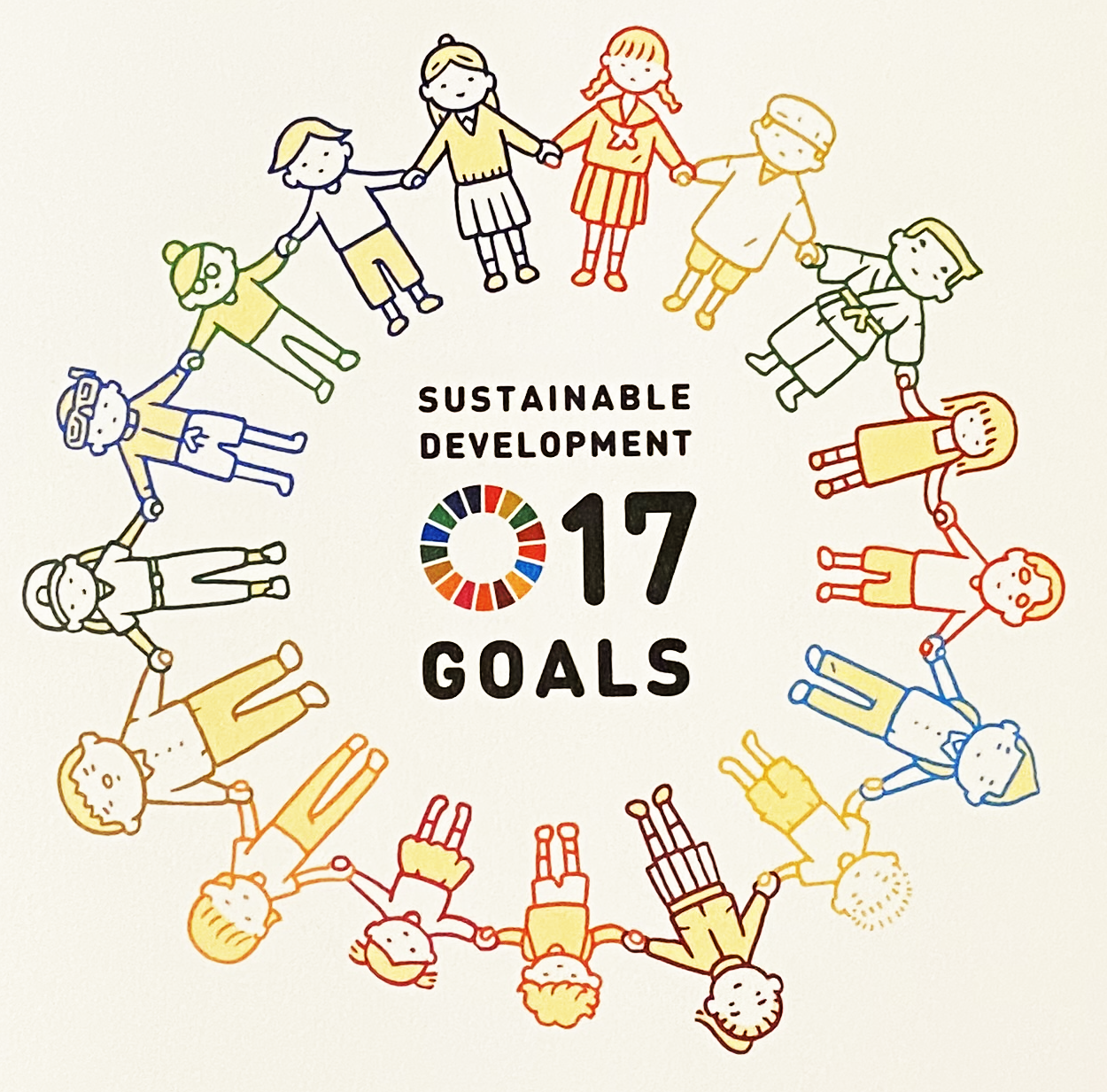各行の文章をgoogleで検索すると元となるサイトに繋がります。そこから更に広げましょう。
<目次>
第01講座 SDGs(持続可能な開発目標)とは何か?
第02講座 目標1:貧困をなくそう
第03講座 目標1:貧困をなくそう
第04講座 目標2:飢餓をゼロに
第05講座 目標2:飢餓をゼロに
第06講座 目標3:すべての人に健康と福祉を
第07講座 目標3:すべての人に健康と福祉を
第08講座 目標4:質の高い教育をみんなに
第09講座 目標4:質の高い教育をみんなに
第10講座 目標5:ジェンダー平等を実現しよう
第11講座 目標5:ジェンダー平等を実現しよう
第12講座 目標6:安全な水とトイレを世界中に
第13講座 目標7:エネルギーをみんなに そしてクリーンに
第14講座 目標8:働きがいも経済成長も
第15講座 目標9:産業と技術革新の基盤をつくろう
第16講座 目標10:人や国の不平等をなくそう
第17講座 目標11:住み続けられるまちづくりを
第18講座 目標12:つくる責任 つかう責任
第19講座 目標13:気候変動に具体的な対策を
第20講座 目標14:海の豊かさを守ろう
第21講座 目標15:陸の豊かさも守ろう
第22講座 目標16:平和と公正をすべての人に
第23講座 目標16:平和と公正をすべての人に
第24講座 目標17:パートナーシップで目標を達成しよう
第25講座 目標17:パートナーシップで目標を達成しよう
****************************************
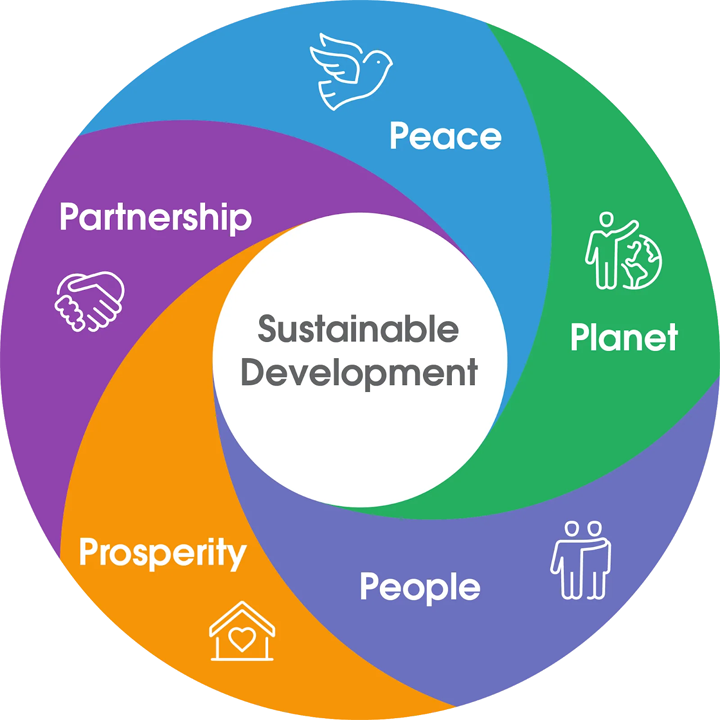
SDGs(持続可能な開発目標)とは何か?
What are the SDGs?
17の持続可能な開発目標とは、青写真です。
すべての人にとってより良い、より持続可能な未来を実現するための。
Sustainable Development Goals are seventeen blueprints
to achieve a better and more sustainable future for all.
これらの目標を達成しようとしなくなれば、
最終的に人類は滅ぶこととなります。
食べ物と飲み物と空気が手に入らなくなるために。
戦争が生じるために。
If we stop trying to achieve these goals,
eventually human beings will perish.
For we will no longer have food, drink, and air.
For wars will arise.
「人間生活」「豊かさ・繁栄」「地球環境」「平和」「協働」の5つのPに基づき、
SDGsは、「誰一人取り残さない」社会の実現を目指しています。
Based on the five Ps of
People, Planet, Prosperity, Peace, and Partnership,
the SDGs aim to realize a society based on
“leave no-one behind”.

人間生活 (目標1、2、3、4、5および6)
People (Goals One, Two, Three, Four, Five and Six)
あらゆる形態と次元の貧困と飢餓に終止符を打つとともに、
すべての人間が尊厳を持ち、平等に、かつ健全な環境の下で
その潜在能力を発揮できるようにする。
In addition to putting an end to
all forms and dimensions of poverty and hunger,
it is intended to enable all people to have dignity
and to equally display their latent potential in a sound environment.

豊かさ・繁栄 (目標7、8、9、10および11)
Prosperity (Goals Seven, Eight, Nine, Ten and Eleven)
すべての人間が豊かで充実した生活を送れるようにするとともに、
自然と調和した経済、社会および技術の進展を確保する。
In addition to
empowering all people to lead rich and full lives,
economic, social and technological advances
will be secured in harmony with nature.

地球環境 (目標12、13、14および15)
Planet (Goals Twelve, Thirteen, Fourteen and Fifteen)
気候変動への緊急な対応などを通じ、地球を劣化から守ることにより、
現在と将来の世代のニーズを充足できるようにする。
Through protecting the planet from deterioration
based on urgent responses to climate change,
it will be made possible to satisfy
the needs of present and future generations.

平和 (目標16)
Peace (Goal Sixteen)
恐怖と暴力のない平和で公正な社会を育てる。
平和なくして持続可能な開発は達成できず、
持続可能な開発なくして平和は実現しないため。
A peaceful and fair society free of fear and violence
will be nurtured,
because sustainable development cannot be achieved without peace,
and peace cannot be realized without sustainable development.

協働 (目標17)
Partnership (Goal Seventeen)
グローバルな連帯の精神に基づき、
すべての人々の参加により、
持続可能な開発に向けた地球規模の協力関係をさらに活性化し、
必要な手段を動員する。
Based on the spirit of global solidarity,
global partnership aiming for sustainable development will be vitalized
and the necessary means will be mobilized
with the participation of all people.
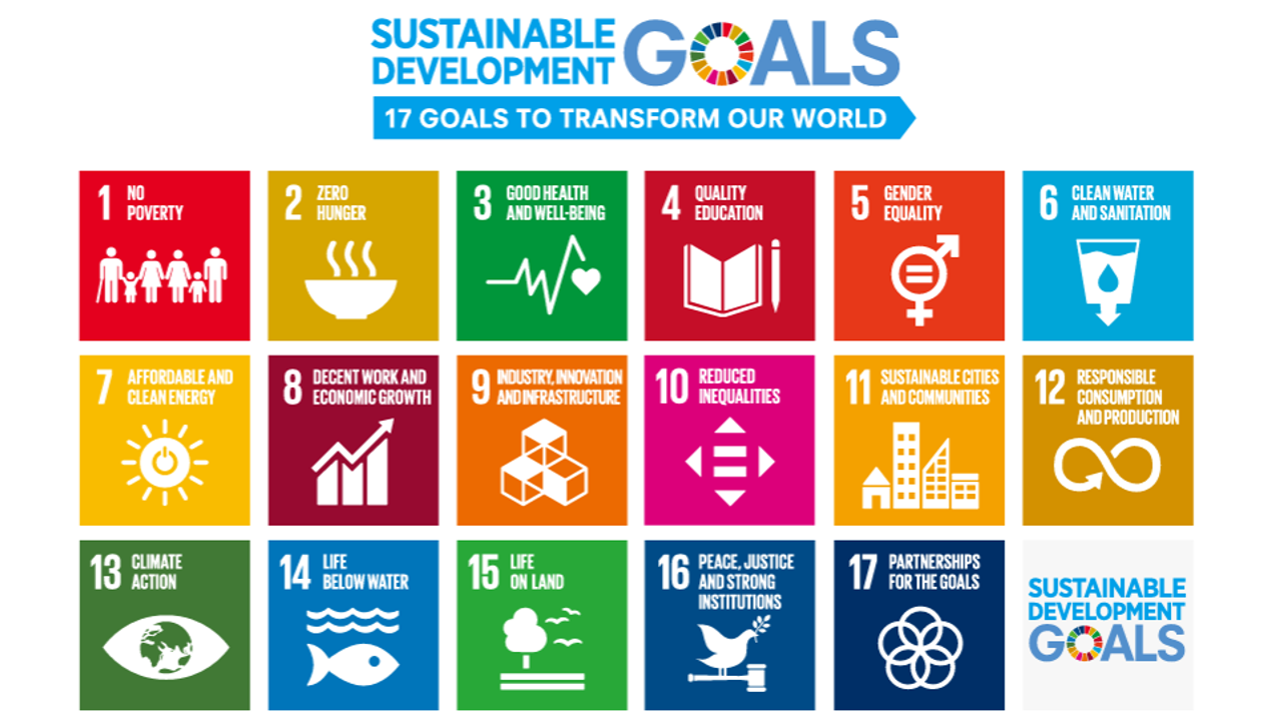
貧困の原因の一つとされているのが貧富の格差。
世界の1パーセントの超富裕層が、世界の富の40パーセントを占めています。
その1パーセントの中の上位5人の大富豪の名前です。
One of the causes of poverty is the disparity between rich and poor.
The ultra-wealthy one percent of the world’s population
accounts for forty percent of the world’s wealth.
These are the names of the top five richest people in that one percent.
<27兆円>イーロン・マスク(米テスラ・モーターズ最高経営責任者)
<$219,000,000,000> Elon Musk (CEO of Tesla Motors)
<21兆円>ジェフ・ベゾス(米アマゾン創業者)
<$171,000,000,000> Jeff Bezos (The founder of Amazon)
<20兆円>ベルナール・アルノー(仏ルイ・ヴィトン最高経営責任者)
<$158,000,000,000> Bernard Arnault (CEO of Louis Vuitton)
<16兆円>ビル・ゲイツ(米マイクロソフト創業者)
<$129,000,000,000> Bill Gates (The founder of Microsoft)
<15兆円>ウォーレン・バフェット(米バークシャー・ハサウェイ最高経営責任者)
<$118,000,000,000> Warren Buffett (CEO of Berkshire Hathaway)
1位はイーロン・マスク。
テスラ・モーターズは電気自動車ベンチャーです。
マスクはほかにもPayPal、スペースX、オープンAIの設立者など、
多くの肩書きをもっています。
Number one is Elon Musk.
Tesla Motors is an electric vehicle venture.
Musk also holds many other titles,
including the founders of PayPal, SpaceX and OpenAI.
2位はジェフ・ベゾス。
世界的に有名なオンラインストアAmazon.comは、
創業当初はオンライン書店としてスタートしました。
In second place is Jeff Bezos.
Amazon, the world-famous online store,
started out as an online bookstore.
3位はベルナール・アルノー。
トップ5唯一のフランス人で、
クリスチャン・デイオールやルイ・ヴィトンなどの
高級ファッションブランドを展開するLVMHグループのCEOです。
In third place is Bernard Arnault.
The only French person in the top five,
he is the CEO of the LVMH Group,
which owns luxury fashion brands,
such as Christian Dior and Louis Vuitton.
4位はビル・ゲイツ。
2020年にマイクロソフト取締役を退任し、
夫婦で設立した慈善団体のビル&メリンダ・ゲイツ財団の活動に力を入れています。
Number four is Bill Gates,
who retired from the Microsoft board in twenty twenty
to focus on the Bill and Melinda Gates Foundation,
a charitable organization he and his wife founded.
5位はウォーレン・バフェット。
バークシャー・ハサウェイは米国ネブラスカ州にある世界最大の投資持株会社で、
バフェットは筆頭株主でもあります。
Fifth on the list is Warren Buffett.
Berkshire Hathaway, located in Nebraska, USA,
is the world’s largest investment holding company,
and Buffett is its largest shareholder.
この5人は、
米経済誌『フォーブス』が発表した2022年版の世界長者番付順に並んでいます。
These five men are listed in the order of
the twenty twenty-two edition of the Richest People in the World,
published by Forbes magazine.
かつて世界を平等にするため共産主義という考えが生まれ、
ロシアはソビエト連邦という連合国を作りました。
いまやロシアは戦争を行う国です。
In the past, the idea of communism was born to equalize the world,
and Russia created a federation called the Soviet Union.
Now Russia is a war-making country.
経済の中間搾取をなくすためにアマゾンが生まれました。
情報の民主化を推進するパーソナルコンピューター化社会に
マイクロソフトは貢献しました。
Amazon was created
to eliminate intermediate exploitation in the economy.
Microsoft contributed to
the democratization of information and the personal computer society.
富裕層となった5人は
慈善団体に寄付をしたり、
慈善活動を運営したり、
教育活動を支援したりしてきてはいるのです。
The five who have become wealthy have donated to charitable organizations,
conducted charitable activities, and supported educational activities.
貧富の格差はなくなっていません。
The disparity between rich and poor has not disappeared.
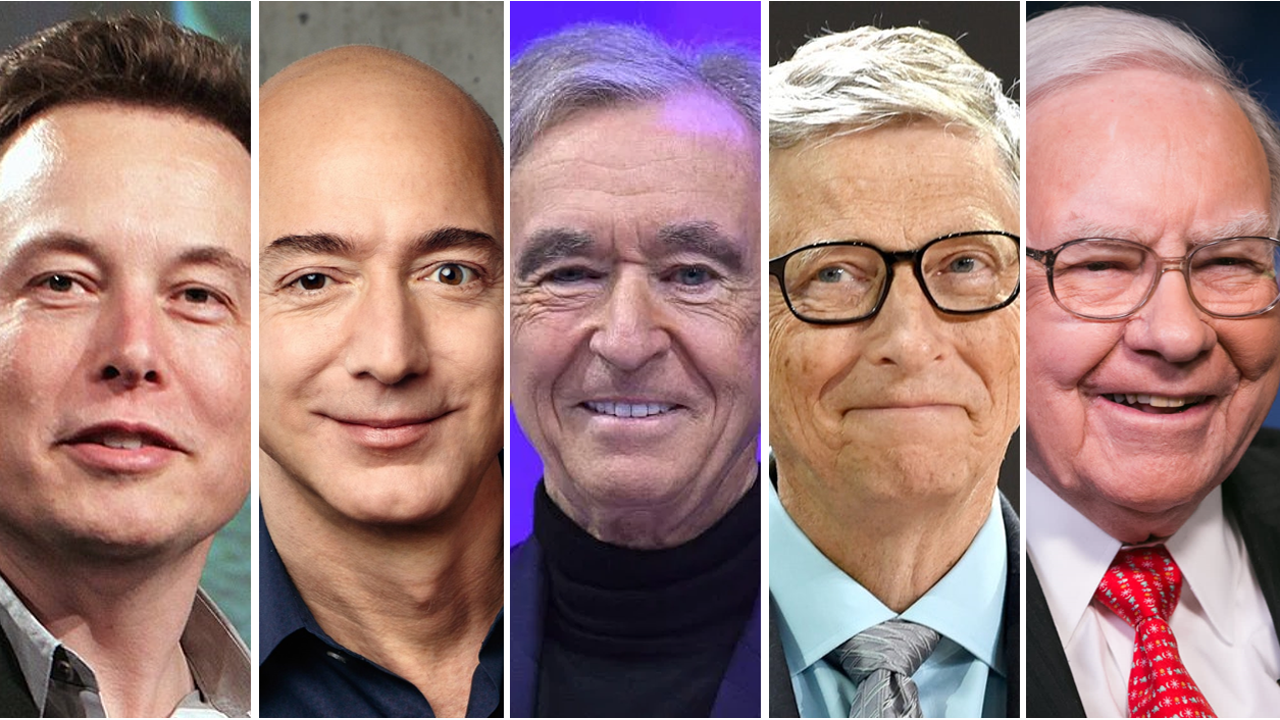
豊かな者たちは怠惰なのでお金を分配ばらまかない。
貧しい者たちはお金を分配ばらまかれると怠惰になる。
The rich are lazy and do not distribute money.
The poor are lazy when money is distributed.
なんとかする方法はないのでしょうか。
貧困をなくす良い方法はあります。
Is there any way to do?
There are good and better ways to eliminate poverty.
ミシンを買うために
5人のグループを作り、お金を出し合いなさい。
Form a group of five members
to come up with money to buy a sewing machine.
そのミシンを使いみんなで服を作って、お金を儲けなさい。
Use that sewing machine to make clothes together and make money.
服の作り方なら教えます。
I can teach you how to make clothes.
自助グループによる貧者のための銀行、
グラミン銀行のマイクロファイナンスと言います。
It is called Grameen Bank Microfinance,
a bank for the poor by self-help groups.
このプログラムは成功し、多くの人々の貧困が解消されました。
This program has been successful
and has lifted many people out of poverty.
この活動を推進したバングラデシュのムハマド・ユヌスは
ノーベル平和賞を受賞しました。
Muhammad Yunus in Bangladesh, who promoted this activity,
was awarded the Nobel Peace Prize.
貧困から脱出する方法があります。
貧困から脱出する方法を知れば、貧困から脱出できます。
There is a way out of poverty.
If you know how to escape poverty, you can escape poverty.
そのために学校で学ぶのです。
That is why we study at school.
マイクロソフトを創設したビルゲイツは、今は慈善家です。
Bill Gates, who founded Microsoft, is now a philanthropist.
彼は言いました。「私たちはこれについて何かをすることがおそらくできます。」
He said, “Maybe we can do something about this.”
貧しい国で何百万人もの子供たちが下痢で亡くなっているという新聞記事を読みました。
He read a newspaper article
about millions of children in poor countries who die from diarrhea.
彼はその国の人々から話を聞き、
病気や貧困について深く調べたりするようになりました。
He started learning from locals in the countries,
and researching disease and poverty more deeply.
5歳の誕生日を迎える前に亡くなる子どもの数を彼は半減させたのです。
He cut in half the number of children dying before their fifth birthday.
ユニクロは、難民が日常生活を支えるために必要な能力を身につけ、
自らのスキルで未来を切り開くことができるような支援を目指しています。
UNIQLO seeks to support refugees in a way that enables them
to acquire the capabilities they need to support their daily lives
and to build a future for themselves using their own skills.
これまで、国連難民高等弁務官事務所を通じて
アジア6カ国(インド、イラン、マレーシア、ネパール、パキスタン、バングラデシュ)で
「自立・生計プロジェクト」を展開しています。
To date, we have developed Self-reliance and Livelihood Projects
through UNHCR in six Asian countries
(India, Iran, Malaysia, Nepal, Pakistan, and Bangladesh).
このプログラムでは、
縫製技術やコンピュータースキルなどの職業訓練、
会社経営に関する研修、
在宅勤務のサポートなどを実施しています。
The programs offer vocational training in areas
such as sewing techniques and computer skills,
training in company management, and telecommuting support.
この支援により、多くの難民が経済的に自立し、
それぞれのコミュニティで安定した生活を送ることができています。
This support is helping many refugees gain greater economic independence
and build stable lives in their individual communities.
貧困とは、人々が本当に必要な
基本的なもの ― 食べ物や水、住む所、衣服や教育や医療を買うためのお金 ―
を持たずに生活することです。
Poverty is when people live without basic things they really need
– like food, water, a place to live,
or money to buy clothes, education, and healthcare.
80年前までは、日本が飢餓に怯えていた。
Up until eighty years ago, Japan lived in fear of famine.
愛知県の知多半島は温暖な気候に恵まれているものの、大きな河川がない。
Although the Chita Peninsula in Aichi Prefecture
was blessed with a warm climate, it had no major rivers.
1947年、知多半島は大干ばつにみまわれ、秋の収穫は皆無に近かった。
In nineteen forty-seven, the Chita Peninsula suffered from a severe drought,
and the autumn harvest was almost nonexistent.
愛知県知多市の農家、46歳の久野庄太郎は愛知用水の構想を思いつき、活動を開始した。
Shotaro Kuno, a forty-six-year-old farmer in Chita City, Aichi Prefecture,
came up with the idea for Aichi Canal and began his campaign.
用水建設の必要性を説き、協力を求めて各地を回った。
He traveled around seeking cooperation,
explaining the necessity of constructing a water canal.
久野の活動を知り彼を訪ねてきたのが、 安城農林学校教諭の浜島辰雄である。
One of the people who visited Kuno after learning about his campaign
was Tatsuo Hamajima,
an instructor at Anjo Agricultural and Forestry School.
浜島は子供のころ水番も経験し、水不足のつらさを知っていた。
Hamajima had experienced water shortage as a child
when he worked as a water carrier.
浜島は勤務の合間に現地を踏査し、独自の路線計画図を作っていた。
He surveyed the site during his work breaks
and created his own route plan.
この路線案は現在の愛知用水のルートとほとんど違わないという。
This route plan is said to be almost identical
to the current route of Aichi Canal.
二人ははじめて会った時から意気投合、翌日から揃って実地調査に出かけた。
The two men hit it off from the first time they met
and went out together for field surveys the next day.
知多半島に木曽川の水を引くという夢のプロジェクトである。木曽川の上流を水源とし、知多半島の先端まで用水路を引くのである。
It was a dream project to bring water
from the Kiso River to the Chita Peninsula,
using the upper reaches of the Kiso River as the water source
and building a water channel to the tip of the Chita Peninsula.
中京圏の飲み水、農業用水、工業用水をまかなう愛知用水事業はこの時動きだした。
The Aichi Canal Project,
which supplies drinking water, agricultural water, and industrial water
to the Chukyo region, started moving forward at this time.
1957年の工事開始からわずか4年で長野県の牧尾ダムと水路1000キロメートルを完成させた。
Construction began in nineteen fifty-seven,
and within just four years, the Makio Dam in Nagano Prefecture
and a one-thousand-kilometer water channel were completed.
1961年に通水を開始。
The system started supplying water in nineteen sixty-one.
久野の行動力と浜島の技術的裏づけがこの大事業の牽引力になった。
The driving force behind this major project was
the initiative of Mr. Kuno and the technical support of Mr. Hamajima.
日本で最も豊かな地域の1つとなった愛知県の礎となった実話である。
It is a true story that laid the foundation
for Aichi Prefecture to become one of the most prosperous regions in Japan.
現在では意志を継承した(株)三祐コンサルタンツが、飢餓に苦しむ世界中の人々を救っている。
Today, Sanyu Consultants Inc., which has inherited their will,
is saving people around the world suffering from hunger.
ザンビアでの灌漑開発プロジェクト、そして、ベナンでの砂漠化防止プロジェクト。
They worked on irrigation development projects in Zambia,
and desertification prevention projects in Benin.
ニカラグアでは、4千人が犠牲になったハリケーンの原因となった焼畑や森林伐採に替わる森林管理プロジェクトに取り組んだ。
In Nicaragua, they worked on forest management projects
to replace slash-and-burn agriculture and deforestation,
which caused a hurricane that claimed four thousand lives.
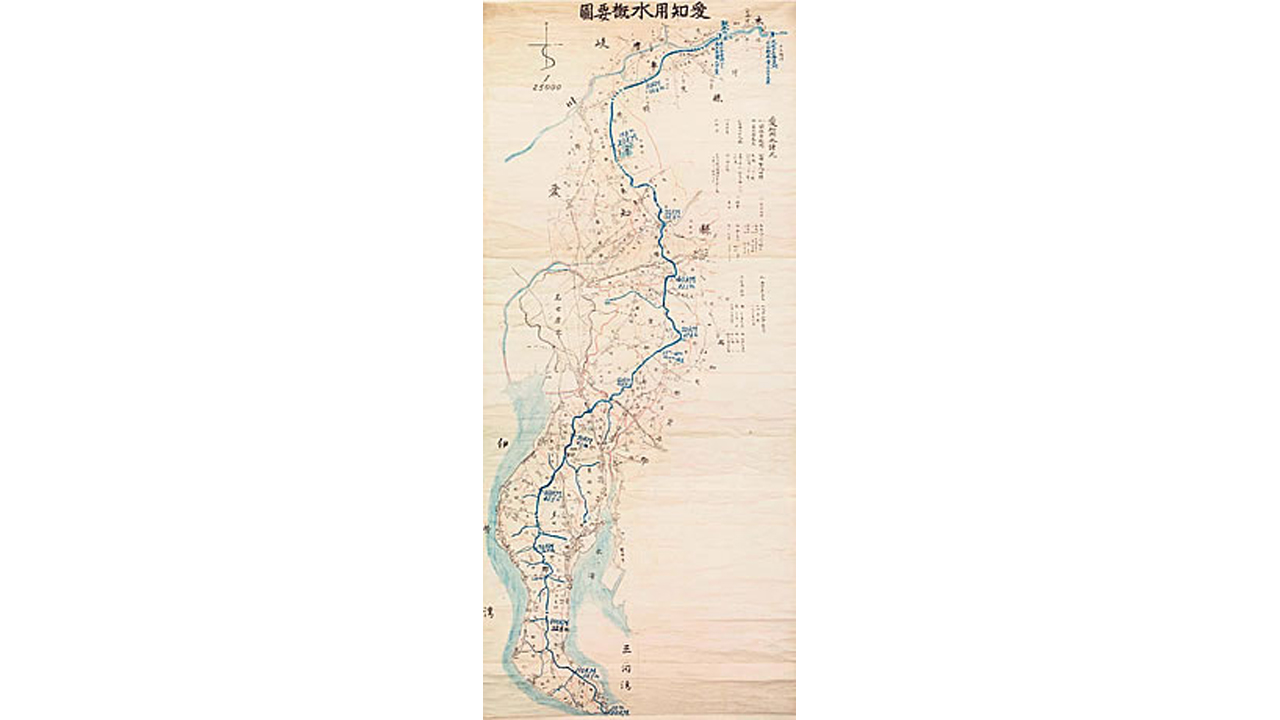
< SDGs > Goal Two : Zero hunger
アフリカの拡大する都市で、世界の人口増加に対する恐怖が試されている。
Global population growth fears put to the test in Africa’s expanding cities.
ウガンダ中部ムピジのジョン・バリルノは9人の子供をもうけた。
John Baliruno, of Mpigi in central Uganda,
has fathered nine children.
彼は先週、「こんなに大勢の子供を持つつもりはなかった」と振り返った。
I never intended to have such a big number,
he reflected last week.
「私と妻は家族計画について知らなかったので、次から次へと子供を産んでしまった。
I with my wife had no knowledge of family planning
and ended up producing one child after another.
今では、適切に子供たちに食事を提供することができない。」
Now I cannot properly feed them.
45歳のバリルノは、国の未来を恐れている。
Baliruno, forty-five, fears for the country’s future.
「人口の増加により環境が破壊されている」と彼はAP通信に語った。
The environment is being destroyed by the growing population,
he told the Associated Press.
「大量に木が伐採され、すでに今は十分な薪を手に入れて料理をすることができない。近い将来、私たちは飢餓に直面するだろう。」
Trees are being cut down in big numbers
and even now we can’t get enough firewood to cook food.
In the near future, we will starve.
アフリカは、世界で最も貧しい大陸であり、出生率も最も高い。
Africa, the world’s poorest continent, also has its highest birth rate.
サハラ以南のアフリカの女性は、一生のうちに平均5.2人の子供を産む。
A woman in sub-Saharan Africa will give
birth to an average of five point two children in her lifetime.
栄養不良と闘うための継続的な努力にもかかわらず、多くの子どもが死亡するリスクが高いことを知っているため、多くの人々は大家族を持つだろう。
Many will have big families,
knowing that despite ongoing efforts to combat malnutrition,
there is a strong risk many of their children will die.
米国アスペン研究所の健康上級研究員であるリンドン・ハヴィランドは述べている。
Lyndon Haviland,
a senior health fellow at the US-based Aspen Institute, said:
「子供たちは高い死亡率を持っている。
Children have high mortality.
あなたの子供を失う可能性が高いと考えるなら、少なくとも1人か2人が生き残ることを望み、より多くの子供を持つだろう。
If you believe there’s a high likelihood of losing your children,
you’re going to have more in the hope that at least one or two will survive.
我々は人々に、その子供たちは生き延びるのだという信念を持たせなければならない。」
We have to give people the belief that their children will live.
世界人口が増え、これから食料危機が起きるのだろうか。
Will the increasing global population lead to a food crisis?
未来の事実は逆となるだろう。
The facts of the future may prove the opposite.
1927年の世界人口は20億人。2022年の世界人口は80億人。
The world population in nineteen twenty-seven was two billion.
The world population in twenty twenty-two was eight billion.
過去100年間の世界人口の増加は4倍を超える。これこそ人口爆発と呼んでよいのに、恒常的な食料危機は起きていない。
The increase in the world population
over the past a hundred years has exceeded four times.
This could certainly be called a population explosion,
yet there has not been a constant food crisis.
理由は簡単である。食料供給の増加が人口や所得による需要の増加を上回っているからである。
The reason is simple. The increase in food supply has outpaced
the increase in demand due to population and income.
次のグラフは、世界の人口、米・小麦の生産量の推移である。人口は2.4倍だが、米、小麦とも穀物生産は3.4倍である。
The following graph shows the changes in
the world’s population and the production of rice and wheat,
The population has increased two point four times,
but the production of both rice and wheat has increased three point four times.
世界的な食料危機は恒常的には起こらない。生活に見合った計画を遂行することさえできるならば。
A global food crisis does not occur on a constant basis
if we can even carry out plans appropriate for our lifestyle.
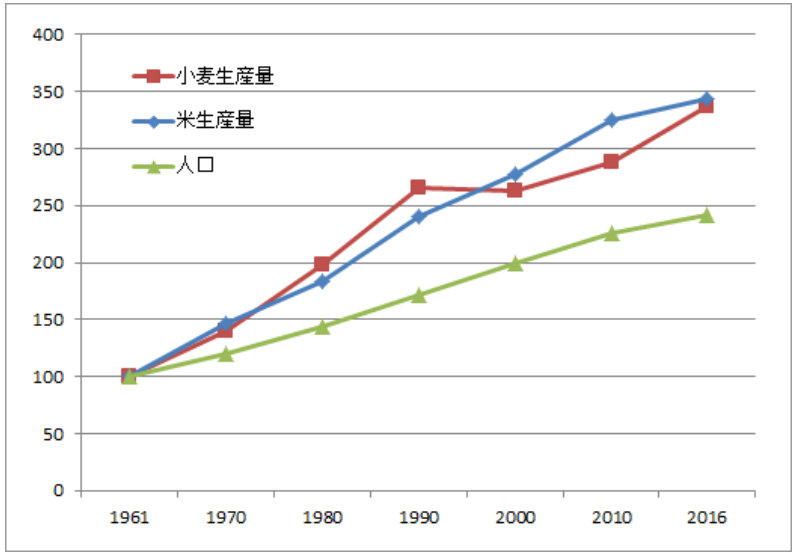
< SDGs > Goal Three : Good health and well-being
地震や災害が起きたとき、どのような支援が必要か。
医療や食料の供給とともに、柔道整復師の役割を訴えるのが森倫範さんだ。
What kind of support is needed when earthquakes or disasters occur?
Mori Michinori is advocating for the role of a Judo therapist,
along with the provision of medical care and food supplies.
森さんは2023年2月に大地震が起きたトルコに、日本の国際緊急援助隊(JDR)の一員として派遣され、後方支援としての活動が主となるロジスティクス要員として業務をこなした。
In February twenty twenty-three,
Mr. Mori was dispatched as a logistics staff member of
the Japan Disaster Relief (JDR) team to Turkey,
where a major earthquake had occurred,
and he carried out his duties primarily in the area of rear support.
JDRは外務省が主管し、国際協力機構(JICAジャイカ)に事務局を置くチームだ。
トルコには地震発生後、181人が派遣されており、柔道整復師の森倫範さんは医療チームのひとりとして派遣された。
JDR is under the jurisdiction of the Ministry of Foreign Affairs
and has its secretariat at
the Japan International Cooperation Agency (JICA).
A total of one hundred and eighty-one personnel
were dispatched to Turkey after the earthquake,
and Mori Michinori, a Judo therapist,
was sent as one of the members of the medical team.
国立病院が地震の影響で建物の安全性が低下し、診療に影響が出ていた。
JDRの隊員たちは駐車場に仮設のテント型野外病院を作り、手術室・分娩室や病棟などを大規模展開。
被災者の治療にあたった。
National hospitals were affected by the earthquake,
with a decrease in building safety and an impact on medical treatment.
The JDR members set up temporary tent-type field hospitals in parking lots
and deployed facilities such as operating rooms, examination rooms,
and wards on a large scale to provide treatment to the affected victims.
隊員は医師、看護師、医療調整員、業務調整員の4つのカテゴリーに分かれ、森さんは医療調整員に加わった。
JDRに「柔道整復師」としての資格登録はなく、電気やトイレなどロジスティクスの担当として派遣された。
The team members were divided into four categories:
doctors, nurses, medical coordinators, and logistical coordinators,
and Mr. Mori joined as a medical coordinator.
Although there is no registration qualification for “Judo therapist” in JDR,
he was dispatched as a logistic personnel responsible for
electricity, toilets, and other logistics.
森さんは担当業務の合間を見て、柔道整復師としての経験も生かした。
リハビリ室でけがや痛みを訴える患者の対応にあたった。
震災から2週間以上経過しており、体を動かすことができず、首や腰の痛みを訴える患者が多かった。
Mr. Mori utilized his experience as a Judo therapist during his assigned tasks.
He provided care to patients
who complained of injuries and pain in the rehabilitation room.
It had been over two weeks since the earthquake,
and many patients were unable to move their bodies
and complained of neck and back pain.
即座に命にかかわるような患者は少なかったものの、骨折やけが、筋肉の損傷、体の痛みなど、外来を訪れる患者の症状はさまざまだった。
森さんが驚いたのは、現地の人々による日本のリハビリ室の評判だった。
「彼はゴッドハンドだ。あそこに行くと治るから。」
While there were few patients with immediately life-threatening conditions,
the symptoms of outpatients varied,
including fractures, injuries, muscle damage, and body pain.
What surprised Mori was the reputation of
the Japanese rehabilitation room among the locals.
“He has God’s hands. If you go there, you’ll be healed.”
膝の靱帯を損傷した患者に対しては、現地にあった段ボール紙とビニールテープを用いて添え木の代わりを作り、包帯でひざを安定させる応急処置を行った。
車いすで来た男性は松葉づえで帰ることができた。
男性は「歩ける!」とすごく喜んだ。
For a patient with a damaged knee ligament,
he made a makeshift splint using locally available cardboard and vinyl tape,
and stabilized the knee with a bandage as an emergency measure.
A man who came in a wheelchair was able to return with crutches.
The man was very happy, exclaiming, “I can walk!”
「私たちの活動をすごく感謝してくれました。
『これから先あなたたちの未来が明るくなるために神にお祈りします。』と。
それがとてもうれしかったですね。」
“They were very appreciative of our efforts.
‘I will pray to God for a bright future for you,’ they said.
That made me really happy.”
< SDGs > Goal Three : Good health and well-being
日本赤十字社は東北地方の再建を支援します。
Japanese Red Cross Society helps Tohoku rebuild.
東北地方の悲劇的な地震、津波、そして原子力災害から既に3年以上が経過した今でも、日本赤十字社(JRCS)の活動は依然として活発です。
Although it has now been more than three years
since the tragic earthquake, tsunami
and nuclear catastrophe of northeastern Japan,
the Japanese Red Cross Society (JRCS)
remains as busy as ever.
災害直後、同団体は緊急対応として活動を開始し、緊急センターを設置し、岩手県、福島県、宮城県などの被災地に医療支援を送りました。
Immediately after the disaster, the organization rushed into service,
setting up emergency centers
and sending medical support to the affected areas,
which included the hardest-hit prefectures of Iwate, Fukushima and Miyagi.
国内の92の病院から支援と物資を引き出して、地域にはほぼ900の医療チームが派遣されました。
Nearly nine hundred medical teams were dispatched to the region,
drawing on support and supplies
from the society’s ninety-two hospitals
across the country.
これら全ての活動は、100以上の国々の赤十字社から送られてきた10億ドル以上の世界中からの寄付金によって支えられました。
All of this work was supported by more than one billion dollars
in worldwide donations sent from Red Cross societies
in more than one hundred countries.
「日本赤十字社は主に緊急時に医療チームや救援物資を送り出すことに関与しています」とJRCS事務局長、成田裕資は通訳を通じて述べています。
“The Japanese Red Cross mainly deals with the emergency phase
by sending out medical teams and relief aid,”
says Hiroshi Narita,
JRCS director general of organizational development,
through an interpreter.
「しかし、世界中から大量の寄付金と支援があったため、我々は再建プロジェクトを始めることができました。これは日本赤十字社にとって非常に新しいことでした。」
“But because there were a lot of donations
and support from around the world,
we were able to start reconstruction projects.
That was very new for the Japanese Red Cross.”
赤十字社からの寄付金は、被災地域の9箇所で約800棟のプレハブ住宅の建設を支援しました。
Red Cross donations have helped build
nearly eight hundred prefabricated homes
in nine locations across the affected region.
これにより、家を失った人々、特に孤立してしまう可能性のある多くの高齢者たちが、コミュニティの一員であり続けることができました。
This has helped maintain a sense of community
for people who lost their homes,
including many elderly
who otherwise might have been left isolated.
JRCSからの寄付金はまた、仮設住宅に住む人々に新しいヒーターや家電を購入するのにも役立ちました。
JRCS donations also helped
to buy new heaters and appliances for people in temporary housing.
「私たちはまた、13万3千世帯に家電を大量に送り出すことができました」と成田氏は付け加えています。
“We were also able to send out
a lot of household electrical appliances
to one hundred and thirty-three thousand households,” adds Narita.
「そして冬には、729箇所の人々にヒーターを送りました。」
“And during winter, we sent heaters to people
in seven hundred and twenty-nine locations.”
医療チームや救援活動は、会費や寄付金によって支えられているため、成田は、一般市民や企業からのさらなる寄付を「ありがたい」と述べています。
Since medical teams and relief activities
are supported by membership fees and donations,
Narita says the JRCS would be “grateful”
for further donations from the public and corporations.
現在、世界中で約13.2億人が電気なしで生活しています。これらの人々のほとんどはアジアやアフリカの発展途上国に住んでいます。
Currently, there are about one point three two billion people
worldwide living without electricity,
mainly in developing countries in Asia and Africa.
パナソニックは、世界の電気のない地域の人々に合計10万台のソーラーランタンを寄付するプロジェクト、「ソーラーランタン10万台プロジェクト」を展開しています。
Panasonic deploys
the ONE HUNDRED THOUSAND SOLAR LANTERN PROJECT,
a project to donate a total of one hundred thousand solar lanterns
to people in regions of the world without electricity.
パナソニックは2013年2月に、ミャンマーの社会的課題を解決する助けとなるNGO(非政府組織)にコンパクトソーラーライト(CSL)を寄付しました。
Panasonic donated Compact Solar Lights (CSLs) to NGOs
helping to solve social challenges in Myanmar
in February twenty thirteen.
それに加えて、インド、ベトナム、ミャンマー、カンボジア、インドネシアのNGOにもCSLを寄付し、ケニアの難民にもCSLを寄付しました。
It donated an additional CSLs to NGOs
in India, Vietnam, Myanmar, Cambodia, Indonesia,
and donated CSLs to refugees in Kenya.
光がなければ、人々は夜間に料理をすることも、働くことも、勉強することも、医療治療を受けることもできません。
Without light, people can’t cook, work, study,
or receive medical treatment at night.
パナソニックは、電気のない人々に光を広げ、ソーラーテクノロジーを共有し、人々の生活をより良くするために活用しています。
Panasonic is spreading light to people without electricity,
and sharing its solar technology to make their life better.
再生可能エネルギーで発電した電気からの光を提供することにより、教育や健康などの領域での社会的課題に取り組む助けとなることを、そして人々の生活にポジティブな変化をもたらすことを私たちは目指しています。
By providing light from electricity
generated with renewable energy,
we aim to help address social challenges in areas
such as education and health,
and to generate positive change in the lives of the people.
「高品質な製品で世界を満たし、その製品を水と同じくらい豊富に、すべての人に利用可能にする。」
“Fill the world with quality products,
make them as abundant as water, available to everyone”.
これは創業者の松下幸之助のビジョンであり、「水道哲学」と呼ばれています。
This is the vision of the founder Konosuke Matsushita,
and is called Tap Water Philosophy.
パナソニックのソーラーランタンの背景には、2006年までのストーリーがあります。
The story behind Panasonic solar lanterns
goes back to two thousand six.
その年、ウガンダ共和国の国務大臣が日本を訪れ、私たちのクリーンエネルギーの未来を実現するのに役立つ努力を象徴するソーラーアークを見学しました。
That year, the Republic of Uganda’s Minister of State visited Japan
and toured the Solar Ark that symbolizes our efforts
to help realize a clean energy future.
彼は後に手紙を私たちに送りました。
He later sent us a letter.
その手紙は電気がないウガンダの地域で人々が直面する状況、特に灯油ランプから出る黒い煙によって引き起こされる健康問題について説明してありました。
It explained the circumstances people face
in areas without electricity in Uganda,
including health problems
caused by the black smoke from kerosene lamps.
また彼は、私たちのソーラーセルが彼らの生活の質を改善するのに役立つ可能性があると私たちの協力を求めました。
He also indicated that
our solar cells could help improve their quality of life,
and invited our cooperation.
私たちは研究開発を始めました、エネルギー貯蔵とエネルギー生成技術の専門知識を使ってこれらの問題を解決するお手伝いをするために。
We began research and development to use our expertise
in energy storage and energy generation technologies
to help solve these issues.
これが、私たちのソーラーランタンの開発につながったのです。
This led to the development of our solar lanterns.
UDフォント(ユニバーサルデザインフォント)は、文字のかたちがわかりやすく、読みやすく、読み間違えにくいことをコンセプトに開発されました。
UD Font (Universal Design Font) was developed
with a focus on making the shape of characters
easy to understand, easy to read, and difficult to misread.
東京都内の大学に通う西川幹之佑さんは、文字が崩れて見える「ディスレクシア」という症状に悩まされていた。
Mikinosuke Nishikawa, a student at a university in Tokyo,
suffers from a symptom known as “dyslexia”,
which distorts the perception of characters.
「あー見づらいですね。あー細いな…。」
He says, “Oh, it’s hard to see. Oh, it’s thin…”
「ディスレクシア」は学習障害の一つで、文字を素早く理解することができないということです。
“Dyslexia” is a learning disorder
that makes it difficult to quickly understand characters.
西川さんの場合、「山」という漢字は縦線3本に見え、「返」という字は細い線が消えているように認識されることもあるそうです。
In Nishikawa’s case,
the kanji character for “mountain” appears as three vertical lines,
and the character for “return” is perceived
as if the thin lines have disappeared.
また、文字のバランスが取れていないように感じて、気分を悪くすることもあるといいます。
Additionally, he feels that the balance of the letters is off,
which can make him feel unwell.
「小学生の頃は読み取るのが精いっぱい。1ページを読むだけで授業1回分、45分かかります。」
“When I was in elementary school,
I was fully occupied with just reading.
It took me one full class, forty – five minutes, just to read one page.”
文字を理解するのが難しいと、文字を覚えて書くことも難しく、小学生時代はテストの点数が伸びませんでした。
Understanding characters is difficult,
so it is also challenging to memorize and write them.
During his elementary school years, his test scores did not improve.
「UDフォント」は文字の形が分かりやすくデザインされていて、より認識しやすいのが特徴です。
UD Font is designed with clear and easily recognizable letter shapes,
making it more accessible.
西川さんはUDフォントと出会い、人生が変わったと言います。
Nishikawa says his life changed when he encountered UD Font.
「太さが一定なのでこれなんて部分なの?と悩むことがない。中学校の時に『UDフォント』と出会って小説1冊を1日で読み切れるくらいになった。」
“Since the thickness is constant,
I don’t have to worry about which part it is.
After encountering the UD Font in middle school,
I became capable of finishing a novel in a day.”
このフォントを手掛けたのはモリサワ『UDデジタル教科書体』フォント開発担当、高田裕美さんです。
The UD Font was created by Hiromi Takada,
who is in charge of the development of
the “UD Digital Textbook Font” at Morisawa.
「シュッと細くなってとがって見えるところが自分に刺さってくるようで、『ストレスになる』『怖い』っていうお子さんもいました。
“Some children told me that the parts that look thin
and pointed stick into them, making them ‘stressed’ and ‘scared’.
『これは丸いから読みやすい』と言ってくれたり、そういう反応も聞くことができました。」
Some also told me that ‘this is round, so it’s easy to read’,
and I was able to hear such feedback.”
細いところを太くしたり、手書きの文字に近い形にしたりすることで、誰にでも見やすく設計されました。
By making thin parts thicker
and making the shape closer to handwritten characters,
the font was designed to be easy for everyone to see.
ヒアリングや改良を重ねて、フォントのリリースまでに約8年かかりました。
After rounds of hearings and improvements,
it took about eight years to release the font.
「多様な人がいるなかで求められるものはちょっとずつ違う。そこも研究していけたらいいなと思う。」
“Different people require slightly different things.
I hope to continue researching that.”

映画を3つ紹介させてください。
Let me introduce you to three movies.
最初の映画は、『グレイテスト・ショーマン』で、夢を追い求める物語です。
映画は、ポップカルチャーの頂点へと上昇する壮大なサーカスを描いています。
The first movie is “The Greatest Showman”,
which is a great movie about going after your dreams.
The movie charts the spectacular circus
as it rises to the top of pop culture.
ここで特筆すべきは、映画の一人の女優についてです。
ひげの女性、レティ・ルッツ役を演じたケアラ・セトルです。
彼女は、恐怖心を乗り越える素晴らしい例となっています。
Something that you should have known
is about one of the actresses in the movie.
The one who played the bearded lady, Keala Settle as Lettie Lutz.
She is an amazing example of pushing past your fears.
彼女は歌います。
She sings.
棘のある言葉で私を切り裂こうとしたって、
私が洪水を起こして沈めてみせるわ。
勇気がある、傷もある。
ありのままでいる。これが私。
When the sharpest words wanna cut me down,
I’m gonna send a flood, gonna drown them out.
I am brave, I am bruised.
I am who I’m meant to be, this is me.
この歌「This Is Me」はゴールデングローブ賞の最優秀主題歌賞を受賞しました。
This song ‘This Is Me’ won
the Golden Globe Award for Best Original Song.
2つ目の映画は『CODA』で、青春コメディドラマです。
エミリア・ジョーンズがルビー・ロッシとして主演しています。
The second movie is “CODA”, which is a coming-of-age comedy drama.
It stars Emilia Jones as Ruby Rossi.
CODA(聴覚障害者の子)であるルビーは17歳の少女で、彼女の聴覚障害者の家族では唯一聴こえる人です。
As a CODA (Child of Deaf Adults) Ruby is a seventeen-year-old girl
and the only hearing person in her deaf family.
通訳としての彼女の責任に慣れているルビーは、家族の漁業を愛するか、音楽学校に行くという自分の夢を追求するかを選ぶことが難しいと感じています。
Used to her responsibilities of acting as an interpreter,
Ruby finds it hard to choose
between her loving family’s fishing business
and fulfilling her own dream of going to music school.
映画では、聴覚障害者のキャラクターを演じるために、ジョーンズと共にアメリカ手話を使ってコミュニケートする聴覚障害者の俳優が出演しています。
The movie uses deaf actors to play the deaf characters,
who, along with Jones, communicate using American Sign Language.
聴覚障害者の視聴者は、聴覚障害者の俳優のキャスティングと演技を称賛し、映像上での聴覚障害者の描写が以前の描写とは対照的に積極的な人々として描かれていることを歓迎しています。
Deaf viewers praised the casting and performances of deaf actors
and found the depiction of deaf characters as active people
to be in welcome contrast to previous depictions on screen.
シアン・ヘダーによって書かれ、彼女自身が監督したCODAは、アカデミー賞で最優秀作品賞を受賞しました。
CODA, written by Sian Heder and directed by her,
won Best Picture at the Academy Awards.
3つ目の映画は『She Said』で、ハリウッドの映画プロデューサー、ハーヴェイ・ワインスタインの性的暴行事件を追ったニューヨーク・タイムズの女性記者2人の実話に基づいています。
The third movie is “She Said”,
which is based on the true story
of two female reporters from The New York Times
who investigated the sexual assault scandal of
Hollywood mogul Harvey Weinstein.
ワインスタインは、アメリカの映画製作会社ミラマックスの創設者であり、彼がプロデュースした作品には、『セックスと嘘とビデオテープ』、『恋におちたシェイクスピア』、『英国王のスピーチ』、『ロード・オブ・ザ・リング』などがあり、数多くの賞を受賞しています。
Weinstein, the founder of the American film production company Miramax,
has produced acclaimed films such as
“Sex, Lies, and Videotape”, “Shakespeare in Love”,
“The King’s Speech”, and “The Lord of the Rings”,
earning numerous awards.
『She Said』は、ワインスタインが何十年にもわたって80人以上の女性をレイプしたことが2010年代の終わりに暴露されるまでの過程を描いています。
“SHE SAID” depicts the process leading up to
the exposure in the late twenty tens
of Weinstein’s rape of more than eighty women over several decades.
記者たちは、ワインスタインの真実を隠し続ける業界の圧力に立ち向かい、被害者たちに説得して証言を得る難しい戦いを経験しました。この映画の登場人物は全員が実名で表現されています。
The reporters faced the difficult battle of
standing up to industry pressure to conceal the truth about Weinstein
and persuading victims to provide their testimonies.
All the characters in this film are represented by their real names.
この事件は、全面的な #MeToo運動のきっかけとなりました。#MeTooは、性的虐待、性的ハラスメント、レイプカルチャーに反対する社会運動で、性的虐待や性的ハラスメントの経験を公にする運動です。
This incident became the catalyst for the full-scale ‘#MeToo’ movement.
#MeToo is a social movement and awareness campaign against
sexual abuse, sexual harassment, and rape culture,
in which people publicize their experiences of
sexual abuse or sexual harassment.
ワインスタインは映画プロデューサーとしての天才でしたが、現在ではアメリカ芸能界で最大の性犯罪者として、計39年の刑を服役しています。
While Weinstein was a genius as a film producer,
he is now serving a prison sentence to a total of thirty-nine years
as the largest sexual offender in the American entertainment industry.
目標5:ジェンダー平等を実現しよう
Goal Five : Gender equality
道行く外国人観光客に声をかけ、とっておきの日本食を堪能してもらう。YouTube動画「Momoka Japan」が人気を集めているのをご存知でしょうか?
Reaching out to foreign tourists passing by,
she let them savor the very best of Japanese cuisine.
Are you aware of the popular YouTube video series “Momoka Japan”?
「日本に来て1日目!初めて食べる日本食に感動が止まらない」
“Day One in Japan! Can’t stop marveling at the first taste of Japanese food!”
興味をそそるタイトルと、海外のみなさんが日本食を美味しそうに食べる姿から、見ると思わず笑顔になってしまう動画の数々はなんと500本以上。
The intriguing titles,
and the scenes of people from overseas
savoring Japanese cuisine with evident enjoyment,
all combine to produce videos that invariably bring a smile to your face.
総再生回数は2億回を超え、チャンネル登録者数は50万人と、注目度が急上昇しているんです。
The series boasts over 500 episodes.
With more than 200 million total views,
and over half a million subscribers, it’s rapidly gaining attention.
制作しているのは20代YouTuberのMomokaさん。
The creator of these videos is Momoka, a YouTuber in her twenties.
「大学生の時アメリカ旅行で全然会話できず悔しい思いをしたのが、英語を学ぶきっかけでした。
“When I traveled to America as a college student
and struggled to communicate,
I was so frustrated that it motivated me to learn English.
猛勉強を重ねて、1年間休学しカナダのホテルで働き英語を学んできました。
After some intense study,
I took a gap year and worked at a hotel in Canada to learn English.
そのときカナダで現地の学生に日本のお菓子を紹介したら、すっごく良いリアクションをしてくれたんです。
When I introduced Japanese candies to local students in Canada,
they had such a great reaction.
日本食や日本のお菓子って本当にクオリティが高いので、もっと海外の方にもトライしてほしいなと思い、動画を作成するようになりました。」
Considering the high quality of Japanese food and candies,
I thought I wanted more people abroad to try them,
which led me to start making videos.”
Momokaさんは新宿や渋谷など、海外観光客の多いエリアで出会った方々に英語で直談判。
Momoka approaches people
in areas with a high volume of foreign tourists,
like Shinjuku and Shibuya,
and negotiates directly with them in English.
「恥ずかしがらずに、がんがん声をかけちゃいますね!この英語おかしいかな?なんてことは考えず、まずは話してみます。
“Without feeling embarrassed, I boldly approach people!
I don’t worry about whether my English sounds strange or not,
I just start talking.
私がバリバリの関西人なことも関係あるかもしれませんが。」
It might have something to do with me being a real go-getter from Kansai.”
OKがもらえた後、一緒におすすめのお店へ向かいます。
After obtaining their consent,
she take them to the restaurant she recommends.
「オッケー、食べ続けましょう!めちゃめちゃ楽しいね。もっと楽しむで。」「こんな体験したことない。おそらく人生で一番のハイライトだよ。」「ホンマにありがとな。とっても嬉しいです。日本をたくさん楽しんでね。」
“OK, let’s keep on trying! I’m enjoying so much. Are you enjoying?”
“I’ve never tried this before. This is probably the best experience.”
“Thank you so much. I’m so happy. I hope you keep enjoying Japan.”
Momokaさんの動画で登場するのは、高級な料理ではなく、トンカツやお刺身、肉じゃがなど日本人にとって親しみ深いものばかり。
The dishes featured in Momoka’s videos aren’t high-end meals,
but rather familiar favorites for Japanese people,
such as tonkatsu, sashimi, and nikujaga.
日本人が当たり前に思っているものを、海外の方が心から楽しんで食べています。
Foreigners are genuinely enjoying
what Japanese people take for granted.
その新鮮な反応に、日本の良さを再認識することができるのです。
Their fresh reactions help us reappreciate the merits of Japan.
https://www.youtube.com/@momokajapan
サントリーは、日本最大の飲料メーカーです。
Suntory is Japan’s top beverage manufacturer.
ベトナムでは、サントリーは学校でのトイレや洗面所の設置に貢献し、子供たちの衛生環境の改善に参加しています。
In Vietnam, Suntory has been contributing to
installations of toilets and washrooms at schools
taking part to improve the sanitary environment for children.
水設備の建設と水教育の実施のほか、2020年にサントリーはベトナムにて、約29,000本のペットボトルをリサイクルすることで、ペットボトル原料のエコトイレを7基建設しました。
Beside constructing water facilities
and conducting water education classes,
in twenty twenty, Suntory built
seven eco-toilets from plastic bottles in Vietnam,
which recycles around twenty-nine thousand plastic bottles.
ベトナムの4,000人の生徒が、これらの衛生的で環境に優しいトイレから恩恵を受けています。
Four thousand students in Vietnam are benefited
from these hygiene and environment-friendly toilets.
経済的には、このプロジェクトは従来のレンガに比べて約25%のコストを節約しています。
In terms of economy, this project saves
around twenty-five percent of the cost,
compared with conventional bricks.
したがって、環境に優しく経済的でもあります。
Therefore, it is both environment-friendly and economic.
タイでは、サントリーは合計で1,664基以上の小型堰を建設し、「水と生きる」の約束のもと、水資源保全プロジェクトを続けることを明言しています。
In Thailand, Suntory has built
a total of over one thousand six hundred and sixty-four check dams
and has committed to continue water resources preservation projects
under the “Living with Water” promise.
小型堰とは、小川の水路を遮る建造物で、川岸沿いに植物が育つのを助けます。
A check dam is a construction that obstructs a waterway of small rivers
and helps plants to grow along the riverbank.
また、大量の水流を遅らせ、沈殿物が沈むのを助けます。
It also helps slow down any heavy water flow
and allow sediment to settle out.
これは、土壌と水を持続可能な方法で保全する方法です。
This is a sustainable way to conserve soil and water.
ケニアでは、サントリーはカンゲミリソースセンターを通じて、学校に清潔で安全な飲用水を供給する活動に取り組んでいます。これは地元コミュニティの教育を支援し、水不足に対処します。
In Kenya, Suntory engages in activities
to supply clean and safe drinking water
to schools through the Kangemi Resource Centre,
which supports the education of the local community
and addresses water shortages.
カンゲミリソースセンターは、ナイロビ市カンゲミのスラム地区に住む人々を支援するコミュニティプロジェクトで、サービスと教育の機会を提供しています。
The Kangemi Resource Centre is a community project supporting those
living in Kangemi slum Nairobi with services and education opportunities.
目的は、これらの非公式の学校を支援し、子供たちの学校環境を改善し、彼らが教育資料にアクセスできるようにし、教師に継続的なトレーニングを提供し、最終的には地元コミュニティがこれを提供できるようにすることです。
The objective is to support these informal schools
by improving schooling conditions for the children
and help them to access educational materials,
provide ongoing training support for teachers
and ultimately to empower the local community to provide this.
ケニアの起業家、テリー・カルンギ・オベルは、センターが2016年に設立された時に、こうインスタグラムに投稿しました。
An entrepreneur in Kenya, Terry Karungi Obel said on Instagram
when the center was established in twenty sixteen.
とてもワクワクしています!ナイロビ市カンゲミのスラム地区の子供たちに、スクラッチを使ってコードを教える準備をしています。
Super excited!
Preparing to teach some children in the slum of Kangemi, Nairobi
how to code using Scratch.
今日はいくつかの機器を設置し、ボランティアの教師たちとの打ち合わせを行います。
Today, we are setting up some machines
and briefing some volunteer teachers.
神よ、この事業を成功させてください!アーメン!!
Lord please see this through! Amen!!
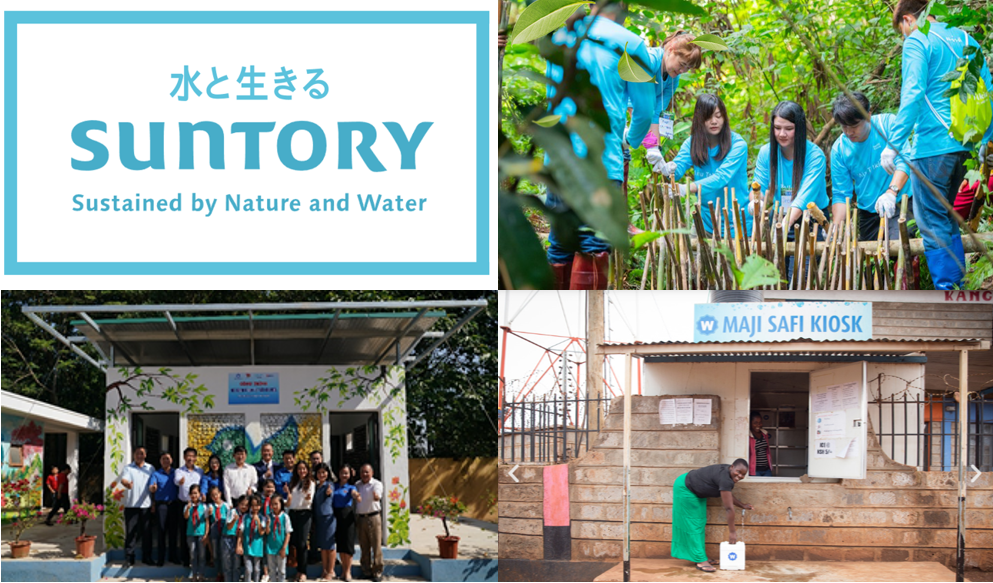
省エネを超え、森林が吸収できるレベルまで人類の二酸化炭素の排出を抑える必要があります。
We need to limit human carbon dioxide emissions
to a level that forests can absorb,
going beyond energy conservation.
脱炭素実現に向けライフスタイルの転換を促す国民運動の愛称は、「デコ活」に決定しました。
The nickname for the national movement
encouraging a lifestyle shift towards decarbonization
has been decided as “Deco-Activity.”
2023年7月13日、8200件の応募の中から有識者たちが選考しました。
This decision was made by experts
from among eight thousand two hundred submissions
on July thirteenth, twenty thirty-three.
日本政府が宣言した2050年のカーボンニュートラル実現のためです。
It is in line with the Japanese government’s declaration
to achieve carbon neutrality by twenty fifty.
西村明宏環境大臣は「デは減らすの意味、コはCO2の意味があります」と理由を説明。
Environment Minister Akihiro Nishimura explained
the reason behind the name, saying,
“‘de-‘ means ‘off’ via the word decrease,
and ‘co’ stands for CO2.”
日本経済団体連合会会長の十倉雅和は「経済界としても、カーボンニュートラルにふさわしい製品を出すように努めていきたい」と語りました。
Masakazu Tokura,
the chairman of the Japan Business Federation, commented,
“We did it genuinely without any pretense.
“As the business sector,
we aim to produce products suitable
for carbon neutrality.”
お笑いコンビサンドウィッチマン伊達みきおは「白熱し若干険悪なムードになりかけました」と笑いを交え、テレビでも発信していきたいと意気込みました。
Comedian Mikio Date from the duo “Sandwich Man”
humorously mentioned,
“It became intensely competitive and almost took a hostile turn,”
and expressed his enthusiasm to promote this on TV.
小池百合子東京都知事は、クールビズを挙げ「非常識と言われていたのが、今では常識になっている」と振り返りました。
Yuriko Koike, Governor of Tokyo,
reflected on the Cool Biz initiative and remarked,
“What was once considered unconventional is now seen as the norm.”
エコ活も候補にあったりしたんですけれど上白石萌音さんがデカフェのようにデという言葉もすごく馴染みがあるのよねっていうような意見がありました、と歌人の俵万智が会議の様子を紹介しました。
“While ‘Eco-Activity’ was also a candidate,
Mone Kamishiraishi mentioned that
the word ‘de-‘, like in ‘decaf’, is very familiar,”
poet Machi Tawara introduced the meeting.
俳優の足立梨花は「人生が豊かにデコレーションされて、すてきな生活を送れる世の中になるように」と話していました。
Actress Rika Adachi expressed,
“I hope life gets richly decorated
and everyone leads a wonderful life.”
五輪マラソン金メダリスト高橋尚子も「この言葉でカーボンニュートラルの実現が身近になるきっかけになってくれたら」と呼びかけ、
Olympic marathon gold medalist Naoko Takahashi said,
“I hope this term becomes a catalyst
for making the realization of carbon neutrality feel closer.”
大学助教でキャスターの桝太一も「前向きなかわいらしい用語でよかった。辞書に載るような言葉になれば」と思いを明かしました。
University assistant professor and broadcaster
Taichi Masu also revealed his thoughts,
“I’m glad it’s a positive and cute term.
I hope it becomes a word that gets included in the dictionary.”
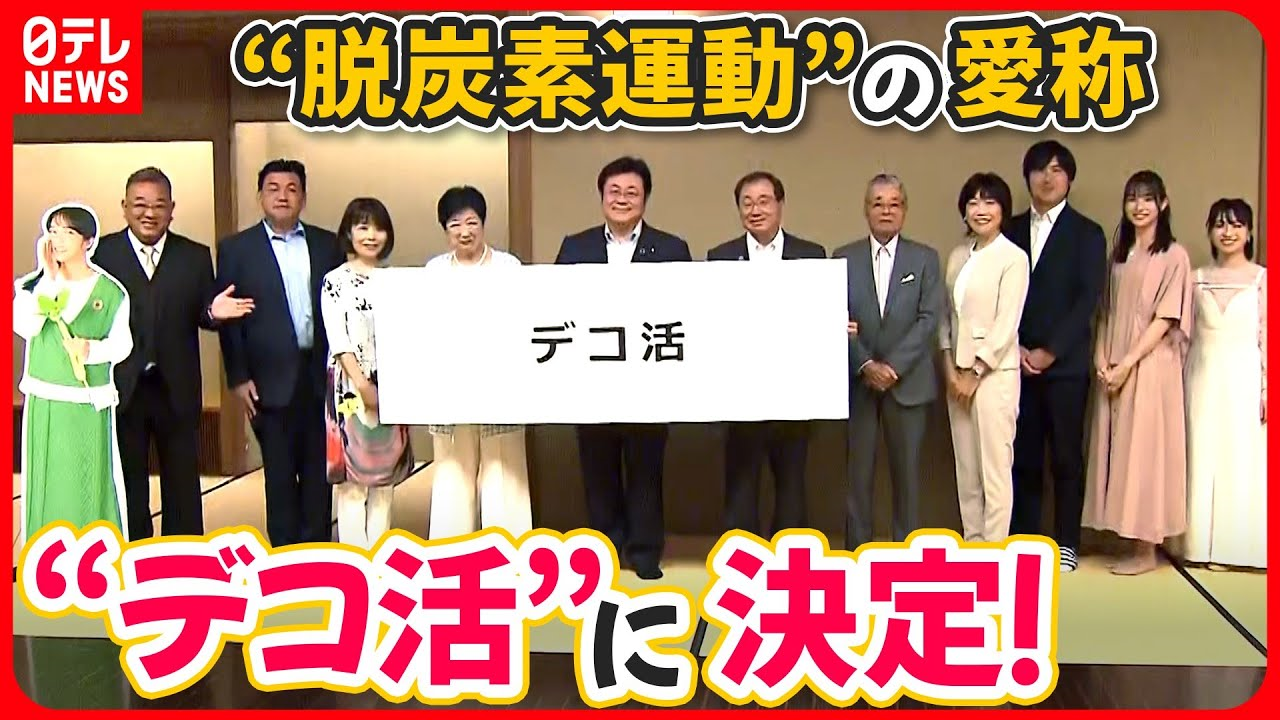
徳島県の上勝町で、「いろどり」というビジネスが大成功を収めている。
In Kamikatsu-cho, Tokushima Prefecture,
the business ‘Irodori’ has been a tremendous success.
おばあちゃんたちが育てた葉っぱをお金に変えるアイデアって、やっぱりすごい。
The idea of turning leaves nurtured by grandmothers into money
is truly remarkable.
「いろどり」は、簡単に言うと、葉を収穫して、料理の飾りつけに使われる「つまもの」として出荷する事業です。
Simply put, ‘Irodori’ is a business that harvests leaves
to be shipped and used as ‘tsumamono’, garnishes for dishes.
葉っぱがお金に化ける。
Leaves are transformed into money.
葉っぱを採って年収1千万円を超えるおばあちゃんもいます。
There are grandmothers who earn more than ten million yen annually
from picking these leaves.
といっても、自然の山にわけ入って葉っぱを採るんじゃなくて、いわゆる「養殖」なのです。
However, they don’t forage leaves from natural forests,
but rather, it’s a form of ‘cultivation’.
家のそばに木が栽培してある。
Trees are planted close to their homes.
50センチ四方の空き地があったら、おばあちゃんたちはみんな何かを植える。
Given a plot of land about fifty centimeters square,
these grandmothers will plant something.
山の斜面は、上から下まですべて植えられた木です。
The mountain slopes are covered, from top to bottom,
with these planted trees.
この紅葉も。あじさいとか、びわ、つばきの葉っぱも。
This includes the leaves of maple, hydrangea, loquat and camellia.
地面に生えてるのも、雑草に見えるけど、作物なんです。
What grows on the ground might look like weeds,
but they are indeed crops.
例えば、高い木を植えて、その下に低い木を植える。そうすることによって、すっごくきれいな、尖った葉ができる。
For example, planting a tall tree and then a shorter one underneath
can yield strikingly beautiful, sharp leaves.
ここに昔から住むおばあちゃんたちが持っている知恵なんです。
This is the wisdom of the grandmothers
who have lived here for generations.
どんな注文が来ても対応できるようにどんどんたくましく進化している。
They continually evolve,
ensuring they can meet any demand that arises.
すごいものです。
It’s truly impressive.
葉っぱを採っているおばあちゃんたちがいきいきしてる。
The grandmothers harvesting the leaves are lively and vibrant.
いまの時代、笑顔は大事ですよ。
In today’s era, a smile is essential.
あたたかさとか笑顔とかが感じられますね。
You can feel their warmth and joy radiating.
バランって、もともとプラスチックのものだと思っている。
Many assume ‘baran’ is typically made of plastic.
本物のバランはギザギザしていない。
However, the genuine ‘baran’ isn’t jagged.
1カン1000円くらいする高級なお寿司屋さんなどが出す葉です。
It’s a type of leaf used by upscale sushi restaurants
that might cost around thousand yen for a single piece.
各地の料亭で、どのお皿にどういう葉っぱが要るのかもわかります。
Traditional restaurants across regions know
which dish requires which specific leaf.
料理人にとっては、葉っぱを採ることは大変なのです。
For chefs, sourcing these leaves is quite challenging.
柿の葉いちまいで、料理のおいしさが、スーッと頭に入ってくる。
A single persimmon leaf can instantly elevate a dish’s flavor,
making the deliciousness directly resonate in one’s mind.
「いろどり」が私たちに必要な理由、わかります。
The reason we need ‘Irodori’ is clear.

最近新しく敷かれたアスファルトが黒いことに気づいていますか。
Have you noticed that the recently laid asphalt is blacker?
これまでのアスファルトが細かい砂をかぶったり経年劣化したりして白く見えるだけではありません。
It’s not just that the older asphalt looked white
due to being covered with fine sand or showing signs of aging.
実際に、新しい今のアスファルトは黒いのです。
In fact, the new asphalt nowadays is truly blacker.
アスファルト改質剤「ニュートラック5000」を花王株式会社が開発しました。
Kao Corporation developed an asphalt modifier
called “Newtrack five thousand.”
洗剤が国内シェア1位である花王は日用品メーカー企業のトップ。
Kao, holding the number one market share in domestic detergents,
is a leading consumer goods manufacturer.
花王は長年、石けんなどの製品をつくるために、界面科学技術を磨き続けてきました。
For many years,
Kao has honed its expertise in interfacial science technology
while producing products like soaps.
これを活かして化学製品でも、ほんの少し添加することでコンクリートやアスファルトの硬さをコントロールできるようにする製品を実は開発しています。
Utilizing this expertise,
they have actually been developing products that,
when added in minute amounts,
can control the hardness of concrete and asphalt.
アスファルト舗装は、その95%が石や砂で、そこに5%のアスファルトを混ぜ合わせてできたものです。
Asphalt pavement is composed of ninety-five percent stones and sand,
with five percent asphalt mixed in.
道路にもよく利用されているアスファルト舗装ですが、コンクリートと比較すると、耐久性には課題があります。
Asphalt pavement, frequently used for roads,
has issues with durability compared to concrete.
荷重や経年劣化によってくぼみが発生することがあるのです。
It can become dented due to heavy loads or age-related wear and tear.
そこで必要になってくるのがアスファルト改質剤です。
This is where asphalt modifiers come into play.
これをアスファルトに混ぜ込むことで、舗装そのものの耐久性をアップさせることができます。
By mixing them with asphalt,
you can enhance the durability of the pavement.
アスファルト改質剤はアスファルト舗装を強く、より長く使えるようにするものなんです。
Asphalt modifiers make the asphalt pavement stronger
Asphalt modifiers make the asphalt pavement stronger
ニュートラック5000は廃棄PETを原料としたアスファルト改質剤です。
Newtrack five thousand is an asphalt modifier
made from recycled PET bottles.
これは、舗装に対して、わずか1%だけ配合するだけで、アスファルト舗装の耐久性を5倍向上させることに成功しました。
By adding just one percent of this to the pavement,
they have successfully increased
the durability of the asphalt pavement by five times.
廃棄PETとは使用済みPETボトルのことです。
Discarded PET refers to used PET bottles.
廃棄PETを活用しつつ、耐久性もしっかりアップする、というまさにポジティブリサイクルが叶いました。
It not only makes use of discarded PET
but also significantly improves durability,
truly realizing a positive recycling approach.
ニュートラック5000を添加したアスファルト舗装は従来と比較して、より黒いのが特徴です。
Asphalt pavement with Newtrack five thousand added
is distinctly blacker compared to traditional pavement.
そのため、ドライバーから白線が確認しやすく、安全走行へ大きく寄与することもできるのです。
As a result,
it offers drivers clearer visibility of road markings,
significantly contributing to safer driving.

< SDGs > Goal Ten : Reduced inequalities
東京パラリンピックメダリストのフランチェスコ・ベッテラさんはイタリアの英雄だ。
Francesco Bettella, a medalist at the Tokyo Paralympics,
is a hero in Italy.
彼は今、2024年にスイスで開かれる通称「サイボーグのオリンピック」での連覇に向けて練習を重ねている。
He is now intensively training for a consecutive win
at the so-called “Cyborg Olympics”
to be held in Switzerland in twenty twenty-four.
正式名称はサイバスロン。
Its official name is the Cybathlon.
2歳で全身の筋肉が萎縮する遺伝性の難病と診断されたベッテラさんは首から下の運動機能がほとんどない。
Diagnosed at the age of two
with a hereditary disease causing full-body muscle atrophy,
Bettella has almost no motor function below his neck.
頭蓋骨を覆うセンサーを用い、アバターと呼ぶ自らの分身を脳波で操作し、仮想空間上の障害物競走で優勝した。
Using a sensor that covers his skull,
he controls an avatar —his virtual alter ego—
using brainwaves and won a virtual obstacle race.
脳とコンピューターをつなぐ技術はブレイン・マシン・インターフェースと呼ばれる。
The technology connecting the brain and computer
is known as the Brain-Machine Interface.
脳科学の進歩によって近年めざましく発展している分野の一つだ。
It’s one of the fields that has seen remarkable growth
in recent years due to advances in neuroscience.
脳卒中患者のアンさんが脳に埋め込んだ電極を介しアバターに声と表情を送った。
Ann, a stroke patient, communicated voice and expressions to an avatar
through electrodes embedded in her brain.
大型モニターに映し出された女性のアバターがゆっくりと話し始めた。
A female avatar displayed on a large monitor
began to speak slowly.
アンさんがブレイン・マシン・インターフェースを使い18年ぶりに自らの「声」を取り戻した。
Using the Brain-Machine Interface,
Ann regained her own “voice” after eighteen years.
研究グループは頭蓋骨に穴を開けて彼女の脳に電極を埋め込み、唇や舌、顎の筋肉に送られるはずだった脳信号を読み取って1分間に80語近い文章を起こすことに成功した。
The research group drilled a hole in her skull,
embedded electrodes in her brain,
and succeeded in transcribing nearly eighty words per minute
by reading the brain signals meant for the muscles of
her lips, tongue, and jaw.
会話にあわせてアバターの口元を動かすソフトウエアも開発し、アンさんの表情まで再現した。
They also developed software to move the avatar’s mouth
according to the conversation, recreating Ann’s expressions.
ブレイン・マシン・インターフェースのゴールの一つは、全盲の患者の視力を回復させることである。
One of the goals of the Brain-Machine Interface
is to restore the vision of patients who are completely blind.
身体機能を失った障害者は、テクノロジーの恩恵を受け、失った身体機能を取り戻すことができるようになりつつある。
People with disabilities who have lost bodily functions
are now beginning to benefit from technology
and are increasingly able to regain their lost abilities.
平等とは、大人から子供まで同じ高さの台に乗っていること。
Equality means that everyone, from adults to children,
stands on a platform of the same height.
台の高さという権利が誰にも一様に与えられている。
The right to the height of the platform
is uniformly given to everyone.
公平とは、壁の向こうを見ることができるという目的を誰もが達成できるように台の高さを調整すること。
Fairness means adjusting the height of the platform
so that everyone can achieve the goal of seeing over the wall.

< SDGs > Goal Eleven : Sustainable cities and communities
2011年3月11日の東日本大震災直後、トヨタはひとつの大きな決断をした。
Immediately following the Great East Japan Earthquake
on March eleventh, twenty eleven, Toyota made a significant decision.
それは東北を、中部、九州に次ぐ第3の国内生産拠点にするというもの。
They decided to establish the Tohoku region
as their third domestic production base,
following the Chubu and Kyushu regions.
震災から4カ月後にはトヨタ車の生産を請け負う3社を統合しトヨタ自動車東日本(TMEJ)を設立。
Just four months after the disaster, they consolidated three companies
responsible for producing Toyota vehicles
and established Toyota Motor East Japan (TMEJ).
2年後の2013年には、TMEJの企業内訓練校を開校した。
In twenty thirteen, two years later,
TMEJ inaugurated its in-house training school.
モノづくりの中核を担う人材が東北の地でも育つよう後押しをするために。
This was established to support and foster individuals
who would take on the central role in manufacturing
in the Tohoku region.
その結果、年間出荷額は300億円(2011年)から8000億円(2019年)に拡大。
As a result, the annual shipment value expanded
from thirty billion yen in twenty eleven
to eight hundred billion yen in twenty nineteen.
従業員数は4500人(2019年)となり、関係仕入れ先やその従業員数も着実に増えている。
The number of employees reached four thousand five hundred
in twenty nineteen,
and the number of associated suppliers and their employees
has been steadily increasing.
トヨタが培ってきた「現場力」「人間力」「技術力」を駆使して東北に産業を築いたのである。
Toyota has utilized its cultivated strengths in
on-site capabilities, “human skills,” and “technical expertise”
to build an industry in Tohoku.
東北の地に継続したモノづくりを根付かせ、地元に納税することで、一過性ではない持続的な復興支援を早くから掲げてきた。
They aimed for sustainable manufacturing rooted in the Tohoku region,
contributing to the local tax base,
and have advocated for consistent reconstruction support
from the early stages.
そうした背景から、毎年欠かさず東北の被災地を訪れてきた豊田社長。
Against this backdrop, Toyota’s president has made it a point
to visit the disaster-affected areas of Tohoku every year.
工場訪問時は、こうして現場で出会った人に突然声を掛けていくのが豊田社長のいつものスタイルだという。
It is said that during his factory visits,
the president’s usual style is to spontaneously approach
and speak to the people he meets on-site.
「東北での生活にようやく慣れてきました」と答える従業員に対し、豊田社長は胸をなでおろした様子に見えた。
In response to an employee who mentioned
that they are “finally getting used to life in Tohoku,”
the president seemed relieved.
自分が下した大きな決断の渦中にいる人々が、本当に前を向いて歩めているのかを感じ取り、そこで見せてくれる笑顔に豊田社長は安心感を覚えているようにも見えた。
It appeared as though he felt reassured seeing the smiles of those
in the midst of the significant decision he had made,
sensing that they were genuinely looking forward and progressing.
「現場がどんなことに困っているかを聞けるチャンスを逃したくない。」
“I don’t want to miss the opportunity to hear
what challenges the workers are facing.”
豊田社長のこうした言葉を聞いて、豊田章男流の視察スタイルを理解することができた。
Hearing these words from the president allowed for
an understanding of Akio Toyoda’s unique inspection style.
「現場がガチガチになるような時間」ではなく、「現場に寄り添う時間」なのだ。
It’s not about creating a tense atmosphere on the factory floor
but rather, a time to closely connect and relate to the workers.
< SDGs > Goal Twelve : Responsible consumption, production
名古屋の川上産業株式会社は気泡緩衝材のトップメーカーです。
Kawakami Sangyo Co., Limited in Nagoya
is a leading manufacturer of bubble cushioning materials.
川上産業は、プラスチックフィルム二枚を貼り合わせ空気の粒を形成するシート「プチプチ」を作っています。
Kawakami Sangyo produces “bubble wrap”,
a sheet that forms air bubbles by adhering two plastic films together.
本社が名古屋にあったこともあり、瀬戸物の梱包をきっかけに全国に広まりました。
Having its headquarters in Nagoya,
its usage for packing pottery from Seto
led to its popularity nationwide.
プラスチック商品メーカーの環境問題への取り組みの決意として、環境マネジメントシステム「エコアクション21」への参加を発表しました。
In a demonstration of their commitment to addressing environmental issues
as a plastic product manufacturer,
they announced their participation
in the environmental management system “Eco Action Twenty-One”.
リサイクル原料の使用率を加速させるため、プラスチック循環構築業務を専門とするリサイクル事業部も発足しました。
They have also launched a recycling department
that specializes in constructing plastic recycling operations,
aiming to increase the rate of using recycled materials.
活動の要は「ループリサイクル」です。
Central to their efforts is the “Loop Recycling” system.
それは、プラごみゼロ化、資源の有功活用、CO₂排出量削減を目指しています。
It aims for zero plastic waste,
effective resource utilization, and CO₂ emission reduction.
自社のプチプチに限らず、他社の使用済み気泡緩衝材、ポリエステル袋、ストレッチフィルムを回収して再加工する、循環プラットフォームです。
Not limited to their own bubble wrap,
they collect used bubble cushioning materials from other companies,
polyester bags, and stretch films for reprocessing,
making it a recycling platform.
これにより、新たに石油から作られる原料の使用率を削減できます。
This reduces the rate of using raw materials made from fresh oil.
現在は、全体の8割ほどのプチプチが再生原料から作られます。
Currently, about eighty percent of their bubble wrap
is made from recycled materials.
世に出たプチプチから再生をまかなうことができれば、さらに持続可能な生産となりえます。
If they can cover the production
from bubble wraps already out in the world,
it can lead to even more sustainable production.
プチプチを大量購入する通販事業者やホームセンターに使用済みのプチプチをためてもらいます。
Online retailers and home centers
that purchase bubble wrap in large quantities
are asked to store used bubble wrap.
新しいプチプチを納品する際に使用済みを回収します。
When delivering new bubble wrap, they collect the used ones.
お笑いコンビ「マシンガンズ」として活動しながら都内でごみ清掃員としても勤務する滝沢秀一さんは、「目的意識ある分別」をこう語っています。
Shuichi Takizawa, who works as a comedian in the duo “Machine Guns”
while also serving as a garbage collector in Tokyo,
talks about “purposeful sorting” as follows:
基本的にリサイクルにはきれいなものを出してください。
Please always give clean items for recycling.
汚れが取れないものが混ざると他のきれいな回収物も汚してしまうため、資源に回さず可燃ごみか不燃ごみへ。
If item that can’t be cleaned mix in,
it can contaminate other clean collected items,
so it should not be treated as resources,
but as burnable or non-burnable trash.
プラスチックの分別が一番難しいかもしれません。
Sorting plastics might be the most challenging.
分別パンフレットもなかなか面白いので、よく読んでみることをお勧めします。
The sorting pamphlet itself is quite interesting,
so I recommend reading it thoroughly.
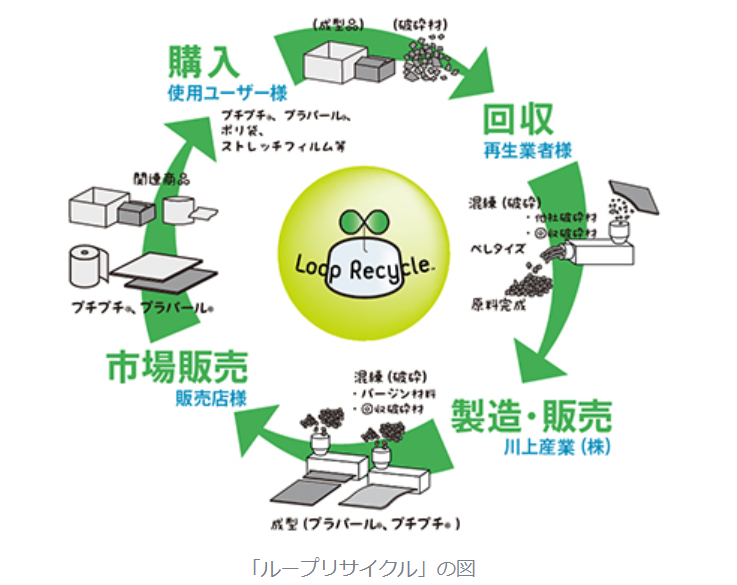
< SDGs > Goal Thirteen : Climate action
近年の夏は昔より暑くなっています。
In recent years, summers have become hotter than they used to be.
そんな中、頼みの綱であるエアコンは何度の外気温まで耐えられるのでしょうか。
Amidst this, one might wonder to what extent our relied-upon
air conditioners can withstand outside temperatures.
最近では外気温が50度まで耐えられるエアコンが販売されています。
Nowadays, air conditioners that can withstand external temperatures
of up to fifty degrees celsius are being sold.
とはいえ、現在のJIS規格の中の冷房過負荷試験条件では43℃となっています。
However, the current cooling overload test condition
in the JIS standard is set at forty-three degrees celsius.
つまり日本の従来のエアコンは外気温が43度までは保証しているということになります。
This means that conventional air conditioners in Japan are guaranteed
to work up to an external temperature of forty-three degrees celsius.
43度を超えると従来のエアコンでは中の電子部品の発熱が規格値をオーバーし、多くのメーカーで能力が落ちます。
When the temperature exceeds forty-three degrees celsius,
the internal electronic components of conventional air conditioners
may exceed the standard heat output,
causing many manufacturers to reduce their efficiency.
猛暑時にエアコンが効きにくくなり、熱中症を避けることができなくなります。
This results in air conditioners becoming less effective during extreme heat,
potentially making it impossible to prevent heatstroke.
日本の夏の最高気温は41度を超え、真夏日は90日間、熱帯夜も60日近くと最多記録を毎年更新しています。
The highest summer temperature in Japan
has exceeded forty-one degrees celsius,
with the number of mid summer days reaching ninety
and tropical nights approaching sixty, setting new records every year.
世界に目を向けてみても、予測を上回るペースで気温が上昇しています。
Looking globally,
temperatures are rising at a rate exceeding predictions.
国連の気候変動に関する政府間パネルは、2030年に世界の気温が産業革命前に比べて1.5度上昇すると警告しました。
The Inter governmental Panel on Climate Change of the United Nations
has warned that by twenty thirty,
global temperatures could rise by one point five degrees celsius
compared to pre-industrial levels.
気温上昇を1.5度前後にとどめるには、世界の二酸化炭素(CO2)排出量を30年までに2010年と比べ45%削減し、50年ごろまでに実質ゼロにする必要があると強調しました。
To keep the temperature rise to around one point five degrees celsius,
it emphasized the need to reduce
global carbon dioxide (CO2) emissions by forty-five percent
by twenty thirty compared to twenty ten levels
and to achieve virtually zero emissions by around twenty fifty.
パリ協定採択当時の予測では、2080年までに世界の平均気温上昇を2度未満、できれば1.5度未満を世界は目指すとしていました。
At the time of the adoption of the Paris Agreement,
the world aimed to limit the global average temperature increase
to below two degrees celsius by twenty eighty
and preferably to below one point five degrees celsius.
2030年までに1.5度に到達してしまうということは、予測が50年早まってしまったと捉えることもできます。
Reaching an increase of
one point five degrees celsius by twenty thirty
means that predictions have potentially advanced by fifty years.
この予測が50年早まるとすると、2026年に44度を超えてくる可能性があります。
Considering this acceleration, there’s a possibility that temperatures
could exceed forty-four degrees celsius by twenty twenty-six.
日本が、2050年までに温室効果ガスの排出を全体としてゼロにする、すなわち2050年カーボンニュートラル、脱炭素社会の実現を目指すことを宣言したのはそのためなのです。
The reason Japan declared its aim
to achieve a carbon-neutral society by twenty fifty,
thereby reducing greenhouse gas emissions to zero overall,
is precisely because of these concerns.
< SDGs > Goal Fourteen : Life below water
未利用魚とは?
What are underutilized fish?
それはよく言えば「地魚」。
One could say they are ‘local fish’.
使われないので「未利用魚」。
Because they aren’t used, they are ‘underutilized fish’.
価値がない、価値が低いので「低利用魚」。
Due to perceived lack of value or low value,
they are ‘low-value fish’.
目的の魚に混じるので「混獲魚(コンカクギョ)」。
Because they mix with target fish, they are ‘bycatch’.
雑多に獲れるので「雑魚(ざこ・じゃこ)」。
Because they are caught in mixed groups,
they are ‘small or miscellaneous fish’
(often referred to as ‘zako’ or ‘jako’ in Japanese).
メジャーでないので「インディーズフィッシュ」。
Because they are not mainstream, they are ‘indie fish’.
日本近海の豊かな海では3700種類の魚介類が取れて、市場には600種程度の魚たちが並びます。
In the rich seas surrounding Japan,
three thousand seven hundred species of seafood can be caught,
but only around six hundred of these species make it to the market.
誰もがが知っている魚は50種程度。
Only about fifty species are widely known to everyone.
残った550種は売れ残りがちです。
The remaining five hundred and fifty species tend to be left unsold.
市場の人は食べ方を知っていても、魚屋さんが町から姿を消しつつある今、消費者に情報が伝わりにくくなってます。
Even if the market vendors know how to prepare and eat them,
with fishmongers disappearing from towns,
it’s becoming harder for consumers to get information.
未利用魚という存在が無視できなくなってきているのです。
The existence of underutilized fish can no longer be ignored.
未利用魚が食べられない理由は様々あります。
There are various reasons
why these underutilized fish aren’t consumed:
名前も形も知らないと、買わない人が多い。
Many people won’t buy the fish if they don’t recognize the name or shape.
毒やトゲが危ない。ハサミで切ってからならトゲの毒も関係なし。
Some have dangerous poisons or spines.
If they are cut with scissors, their spines’ venom is no longer a concern.
数が揃わず、売れない。たまにしか取れない。とれても一匹。
They aren’t consistently available for sale.
They are caught infrequently,
and even if they are caught, it’s often just one fish.
有名な魚でも人が食べない未利用な部位があります。
Even well-known fish have parts that people don’t eat.
マグロの大トロは今でこそ高級食材ですが、江戸時代は冷蔵技術が発達しておらず、すぐ悪くなるため、煮込みで食べられる以外は捨てられてました。
While the fatty tuna belly is now considered a luxury food item,
during the Edo period, due to the lack of refrigeration technology,
it would spoil quickly and was often discarded unless used in stews.
陸で「捨てる」と表現されている場合、多くは飼料や肥料になっている事がほとんどです。
When we say ‘discard’ on land,
it often means that it’s being used as feed or fertilizer.
魚の油はDHAやEPAが多く含まれます。
Fish oil is rich in DHA and EPA.
そこで、マグロやカツオの頭はグツグツ煮て魚油を取ります。
Thus, heads of tuna or bonito are boiled to extract the oil.
健康食品は、結構高いですが、カツオブシにするためカツオをぐつぐつ煮た後の油から取って精製しているのです。
Health supplements can be quite expensive,
but they are often refined from the oil remaining
after boiling the bonito to make dried bonito shavings
もったいない。知らなかったことでも、新しく知ることで、利用することができるようになるのです。
It’s such a waste.
Things we didn’t know can become usable once we learn about them.
もったいないの精神が持続可能な未来を生んでいるのです。
The spirit of ‘mottainai’ (a sense of regret concerning waste)
is creating a sustainable future.
事実、寿司ネタとして最も人気があり、絶滅危惧種に分類されていたホンマグロは、資源回復が進んだため危機を脱出しています。
In fact, the Atlantic bluefin tuna,
which is the most popular as a sushi ingredient
and was classified as an endangered species,
has escaped the crisis due to the recovery of its population.
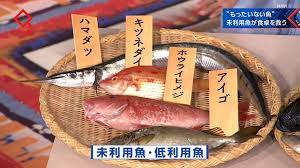
< SDGs > Goal Fifteen : Life on land
スヴァールバル世界種子貯蔵庫は、ノルウェー領スヴァールバル諸島最大の島であるスピッツベルゲン島に位置する種子銀行です。
The Svalbard Global Seed Vault
is a seed bank situated on Spitsbergen Island,
which is the largest island
in the Norwegian territory of the Svalbard archipelago.
「現代版のノアの箱舟」とも、「あらゆる危機に耐えうるように設計された終末の日に備える北極の種子貯蔵庫」とも称します。
It is also known as “The modern-day Noah’s Ark”
and “The Arctic Seed Vault,
designed to endure all crises in preparation for the Doomsday.”
ノルウェー本土と北極点の間にあるノルウェー領スヴァールバル諸島の山の側面に埋められた世界種子貯蔵庫は、ほぼすべての種子を保存しています。
Buried in the side of a mountain in Svalbard,
a Norwegian archipelago between mainland Norway and the North Pole,
the Global Seed Vault stores virtually every kind of seed.
すでに86万のサンプルを保持している金庫の内部を見てみましょう、常に新しいものが追加されています。
Take a look inside the vault that already holds
eight hundred and sixty thousand samples,
with more getting added all the time.
入口の中には、山の中深く130メートルの金庫の部屋に続くトンネルがあります。
Inside the entrance, there’s a tunnel that runs to the vault’s rooms,
one hundred and thirty meters deep into the mountain.
人々は「どうやってそんなに多くの種子を持っているの?」と言います。
People will say, “how can you have enough seeds up there?”
でも、それがポイントではありません。それは植えるためのものではないんです。
That’s not the point, it’s not for planting.
これは実際には植物育種のための遺伝的資源なのです。
This is really a genetic resource for plant breeding.
スヴァールバルは非常に寒いため、理想的な場所でした。
Svalbard was an ideal location because it’s so cold.
種子は永久凍土に凍ったまま保たれます。
The seeds can stay frozen in the permafrost.
キャリー・ファウラーは重要なこととして、「種子をそのまま使う必要はない」と言います。
Importantly, Cary Fowler says, “the seeds don’t have to be used as is.”
代わりに、研究者たちはそれらを利用して、病気や気候変動に耐えるような、潜在的に有益な特性を研究し、いつの日かそれらを現在の作物に取り入れることを期待しています。
Instead, researchers can use them to study potentially beneficial traits,
like those for withstanding disease or climate change,
and hopefully one day incorporate those into current crops.
「種子貯蔵庫が有用であり、そのコストを何度も返済するために、我々は世界の終末を経験する必要はありません」と、種子貯蔵庫の「父」と見なされているキャリー・ファウラーは彼の本で書きました。
“We don’t need to experience apocalypse
in order for the Seed Vault to be useful
and to repay its costs many times over,”
Cary Fowler, the man considered the “father” of the seed vault,
wrote in his book.
「私たちは世界の終わりを予想していたわけではありません。
“We were not anticipating the end of the world.
私たちは実用主義者でした。
We were pragmatists.
私たちは既に経験していた問題、個々の遺伝子銀行での多様性の喪失に対処したかったのです。」
We wanted to address a problem we were already experiencing:
the loss of diversity in individual gene-banks.”
そしてそれは既にその有用性を証明しています。
And it’s already proved its helpfulness.
種子銀行は、シリア戦争中にアレッポの種子銀行が損傷した後に失われたサンプルのいくつかを置き換えることができました。
The seed bank was able to replace
some of the samples that had been lost
after a seed bank in Aleppo was damaged during the Syrian War.
「なぜ我々がそれを建てたのかという理由をそのことが示しています。」とファウラーは言いました。
“It illustrates why we built it,” Cary Fowler said.
「そのコレクションの喪失は取り返しのつかないことでした。」
“Loss of that collection would be irreplaceable. ”
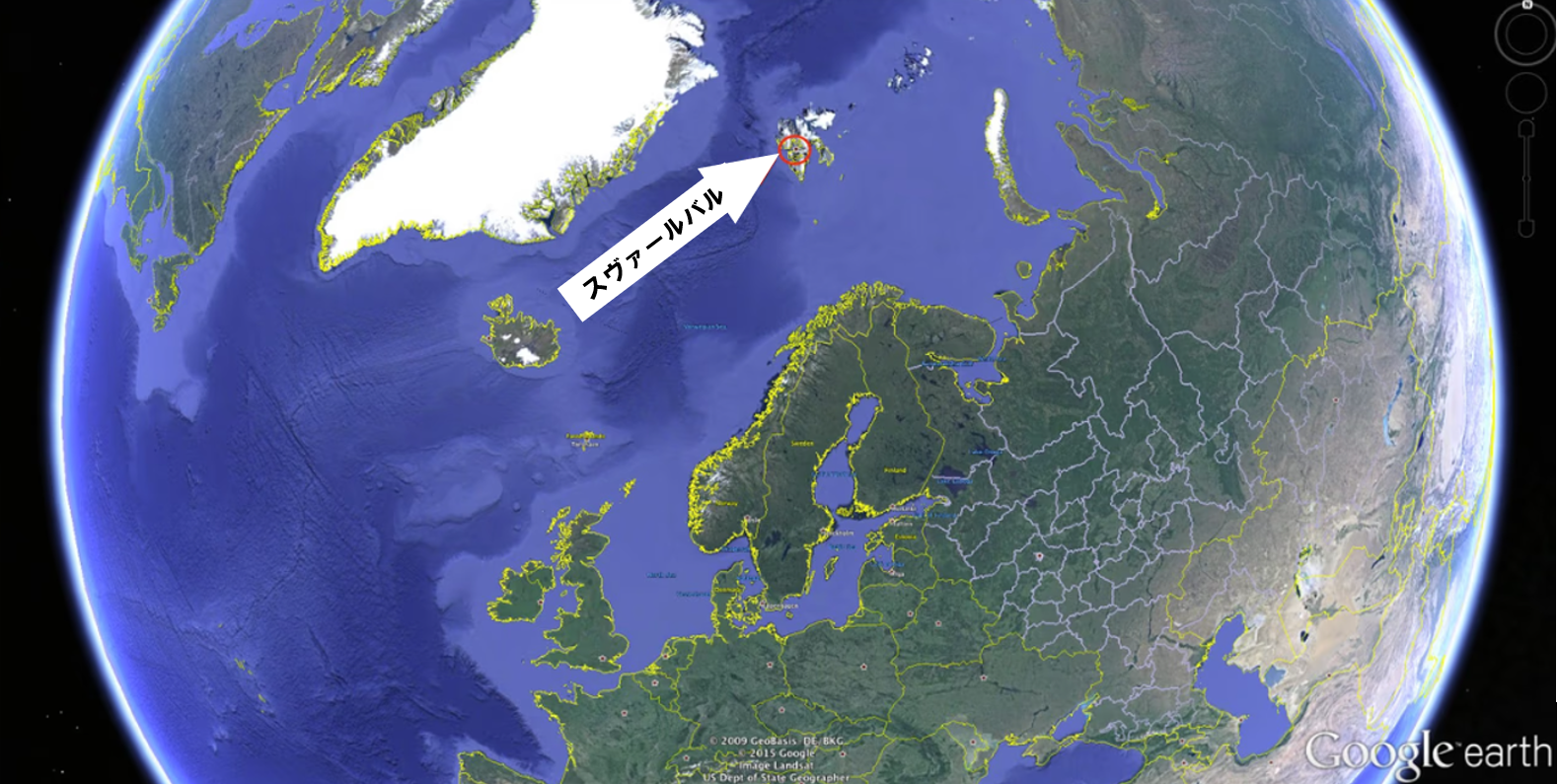
< SDGs > Goal Sixteen : Peace, justice and strong institutions
「すしざんまい」は関東を中心に展開する寿司チェーン店。
“Sushi Zanmai” is a sushi chain store
that is mainly spread throughout the Kanto region.
毎年初競りにおいてクロマグロを何億円もの最高値で落札していたことが有名である。
It is famous for winning bluefin tuna at the highest prices
of several hundred million yen at the annual first auction.
お寿司といえば、すしざんまい!
When you think of sushi, you think of Sushi Zanmai!
CMで社長が両手を広げたポーズも広く知られている。
The pose of the president with both arms spread
in commercials is also well-known.
最近、インターネット上で、「すしざんまい」がソマリアの海賊を撲滅した、という話が広まっている。
Recently, a story has spread on the Internet
that “Sushi Zanmai” eradicated pirates in Somalia.
「すしざんまい」の木村清社長がソマリアにおける寿司を通じた海賊撲滅の真相について語った。
President Kiyoshi Kimura of Sushi Zanmai spoke about the truth
behind the eradication of pirates in Somalia through sushi.
ジブチ共和国からもほど近いソマリア沖は、キハダマグロ、バチマグロその他の世界的な好漁場です。
The waters off Somalia,
not far from the Republic of Djibouti,
are a global hotspot for good fishing,
teeming with yellowfin and skipjack tuna among other species.
ところが、ジブチを含むソマリア沿岸は、2004年に起きたスマトラ沖地震による津波で、壊滅的な打撃を受けてしまいました。
However, the coastal areas of Somalia, including Djibouti,
suffered a devastating blow from the tsunami
caused by the Sumatra earthquake in two thousand four.
1990年代に内戦が始まり、それをきっかけにソマリアの海賊の問題が生じました。
The civil war began in the nineteen nineties,
which led to the problem of Somali pirates.
平和とは縁遠い暮らしが続いていた場所で起こったこの津波被害は、致命的なものでした。
This tsunami disaster, which occurred in a place
where life had been far from peaceful, was deadly.
それも影響したのか、2005年頃からは海賊被害がこの海域を通過する世界各国の船舶にも拡大し、ソマリア周辺海域が航行にも危険な状態となりました。
Perhaps as a result of this, from around two thousand five,
pirate attacks expanded to affect ships from all over the world
passing through these waters,
making the seas around Somalia dangerous to navigate.
そこで、日本の自衛隊や、アメリカ、フランス、ドイツ、スペイン各国の軍隊が艦艇や哨戒機を派遣するなどして、海賊が出ないように努力してきました。
Consequently, various countries’ military forces,
including Japan’s Self-Defense Forces
and those of the United States, France, Germany, Spain,
have dispatched warships and patrol planes
to make an effort to prevent pirate activities.
私のもとへもジブチから要請があり、また、私も自衛隊の先輩として、どうして海賊が出るんだろうと不思議に思っていたこともありました。
I also received a request from Djibouti,
and as a senior of the Self-Defense Forces,
I had also wondered why pirates were appearing.
私は現地に行き、ジブチの大統領や水産関係で働く方々に聞いてみました。
I went there and asked the president of Djibouti
and people working in the fisheries industry.
その結果、状況を把握することができました。
As a result, I was able to ascertain the situation.
海賊にならずに済む方法を考えることです。
We need to think of ways to live without resorting to piracy.
最後は人間と人間の話し合い、会話です。
In the end, it’s about human-to-human dialogue and conversation.
現地で海賊が生まれる原因をなくし、彼らが今後暮らしていくための形を整えていかなければなりません。
We must eliminate the causes of piracy locally
and shape a way for them to live in the future.
< SDGs > Goal Sixteen : Peace, justice and strong institutions
「すしざんまい」の木村清社長は現地を回り、海賊らしき人と話をすることに。
President Kiyoshi Kimura of Sushi Zanmai went to the local area
and talked to people who seemed to be pirates.
「なんで海賊をするんだ?」と聞いた。「ゴミを捨てるやつがいる。魚を取っていくやつがいる。だから脅かしてやろうと思ったらお金をくれた。これはいい商売だ」と言う。
“Why do you become pirates?” I asked.
They said, “There are those who throw garbage.
There are those who take fish.
So we thought we’d threaten them and then they gave us money.
It’s a good business.”
そうなのかと思って、モスクにみんなを集めて言った。
Thinking about it, I gathered everyone in a mosque and said.
「人のお金を脅して取って、それを子どもの養育費に充てて、それでいいと思うのか?
“Do you think it’s okay to intimidate people for their money,
and to use it for your children’s upbringing,
一生懸命、額に汗して稼いだお金で鉛筆1本買ってあげると子どもは違うんだ。」
It’s not the same for a child when you buy him a single pencil
with the money you earned with your hard work and sweat on your forehead.”
みんな涙を流して感動してくれてね。
Everyone was moved to tears.
そもそも魚のとり方もなっていないから、船を3隻持って行って、獲るところからその後の氷詰めまで教えた。
Since they didn’t even know how to catch fish,
I took three ships and taught them from catching to icing.
ソマリアの人はヤギとかラクダを食べていて、魚をあんまり食べないから、1トンもあれば港のそばに住んでいる人の分はみんな間に合っちゃう。
People in Somalia eat goats and camels and don’t eat much fish,
so one ton is enough for everyone living near the harbor.
1隻で1トンくらいとれるから、日本から送った船を運搬船にして、オマーンまで一昼夜かけて運んで売ってあげた。
Since one ship can catch about one ton,
we used the ship sent from Japan as a transport ship
and spent overnight carrying fish to Oman to sell it for them.
現地の漁協を通じて漁民に漁業指導をしました。
I conducted fishing instruction for fishermen
through the local fisheries cooperative.
そして、およそ3年。試行錯誤をしながら、ジブチやソマリア沖で漁業ができる人たちとビジネスをするための準備を進めてきました。
And so, for about three years,
we’ve been preparing to do business with people
who can fish off Djibouti and Somalia, with trial and error.
現地の人たちに魚を獲ってもらって、それを私たちが買うための仕組みをつくろうとしています。
We are trying to create a system
where local people catch fish and we buy it.
今はまだ、採算が取れるような水準ではありませんが、将来的にはきちんと利益が出る目算は立っています。
Right now, it’s not at a level where it’s profitable,
but we have plans that should generate proper profits in the future.
みんな一日何千円でも漁業を通して仕事と収入を確保できれば、海賊をやらずに済む。
If everyone could secure work and income through fishing,
earning thousands of yen a day, they wouldn’t need to turn to piracy.
政府も、彼らが漁業に従事して、国としてしっかりしていくことを望んでいる。
The government also wishes for them to engage
in the fishing industry and to become a stable country.
ならば、お互いにやりましょう、ということで、我が社も協力して、政府と漁業分野の合意書を交わすことにしました。
Therefore, let’s work together,
and my company decided to cooperate and sign
an agreement with the government in the field of fisheries.
治安維持は自衛隊の仕事です。
Maintaining security is the job of the Self-Defense Forces.
暮らしをつくるのはわれわれ民間の人たちのやることだと思います。
Creating livelihoods is something we civilians should do.
両輪としてどちらも必要なことです。
Both approaches are necessary as two wheels of a cart.
そうして海賊の出ない、普通の経済の国になったらいいと思います。
It would be good
if the country could become a normal economic nation without pirates.

< SDGs > Goal Seventeen : Partnerships for the goals
SDGsの根底には、ドベネックの漏れ桶モデルと呼ばれる考え方があります。
The concept of the Sustainable Development Goals (SDGs)
is based on what is known as the Dobeneck’s leaky pail model.
高さの異なる板で囲まれた桶に水を注いでも、一番低い板の位置までしか貯まらないように、世界に偏在する社会課題がある限り、世界全体の幸福は高まらないという考え方です。
It suggests that just as water poured into a pail surrounded by planks
of different heights will only fill up to the level of the lowest plank,
the overall happiness of the world cannot increase
as long as there are social issues
that are unevenly distributed across the globe.
世界が持っている資源には限界があり、かつ、偏在しています。
The world has limited resources, which are unevenly distributed.
「持てる者」は「持たざる者」から搾取することもできれば、協力して全体の価値をあげることもできます。
“Those who have” can either exploit “those who do not have”
or cooperate to increase the overall value.
歴史を紐解けば、20世紀までの人類は、誰かから何かを奪う構造を作り出していました。
If we unravel history, humanity up to the twentieth century
has created structures where something is taken from someone.
一方が富み、一方が貧しくなるこの構造は、分断、貧困や不満に繋がります。
This structure, where one side becomes rich and the other poor,
leads to division, poverty, and dissatisfaction.
また、この構造は私たち人類が消費する資源のツケを地球の自然環境に押し付けるような行為だったとも言えます。
Moreover, this structure was also an act of pushing
the cost of resources consumed by us humans
onto the natural environment of the planet.
21世紀に突入し、この構造での成長が限界に来ているからこそSDGsがあり、「パートナーシップで目標を解決しよう」と提案しているのです。
Entering the twenty-first century,
the SDGs represent the recognition that
growth within this structure has reached its limits,
and suggest ”Partnerships for the Goals.”
SDGsの目標はどれも単独の個人・組織・国では達成困難なものばかりです。
The goals of the SDGs are challenging to accomplish
by a single individual, organization, or country alone.
だからこそ、協力を通じて全体のゴールを達成していくという考え方が必要不可欠なのです。
Therefore, the concept of achieving the overall goals
through cooperation is essential.
それぞれの組織の得意領域を重ね合わせる中で、社会課題を解決するためのイノベーションや方策が生まれます。
Innovations and strategies to solve social issues are born
through the overlap of each organization’s areas of expertise.
何より、私たち一人ひとりの個人レベルにおける行動が問われています。自分が起点・ハブとなり、協力関係を築く。
Above all, the actions of each individual are in question.
One should become a starting point or hub, and build partnerships.
個人が起こす行動は小さいものですが、その行動が波紋を生み出し、波紋が重なり合い、やがて周囲を巻き込み変化を促す大きな渦となり、大きな社会的インパクトをもたらします。
An individual’s actions may be small, but they create ripples
that overlap, eventually involving others and promoting change,
becoming a large whirlpool with significant social impact.
貧困や飢餓、健康や教育などの多くの社会課題を抱える途上国を先進国が資金面や技術面で支援することには大きな価値があります。
Supporting developing countries that face many social issues
like poverty, hunger, health, and education has great value,
whether it is financial or technical.
途上国支援の代表的な取り組みと言えば、政府開発援助(ODA)に代表される国際協力が有名です。
A typical example of support for developing countries
is international cooperation represented by
Official Development Assistance (ODA).
これも私たちにできることの一つです。
This is also something we can do.
SDGsカードゲームを使った研修プログラムを提案する株式会社プロジェクトデザイン福井信英代表は以上のように説明しています。
Nobuhide Fukui, the representative of Project Design Corporation,
which proposes training programs
using the SDGs card game, describes the above.
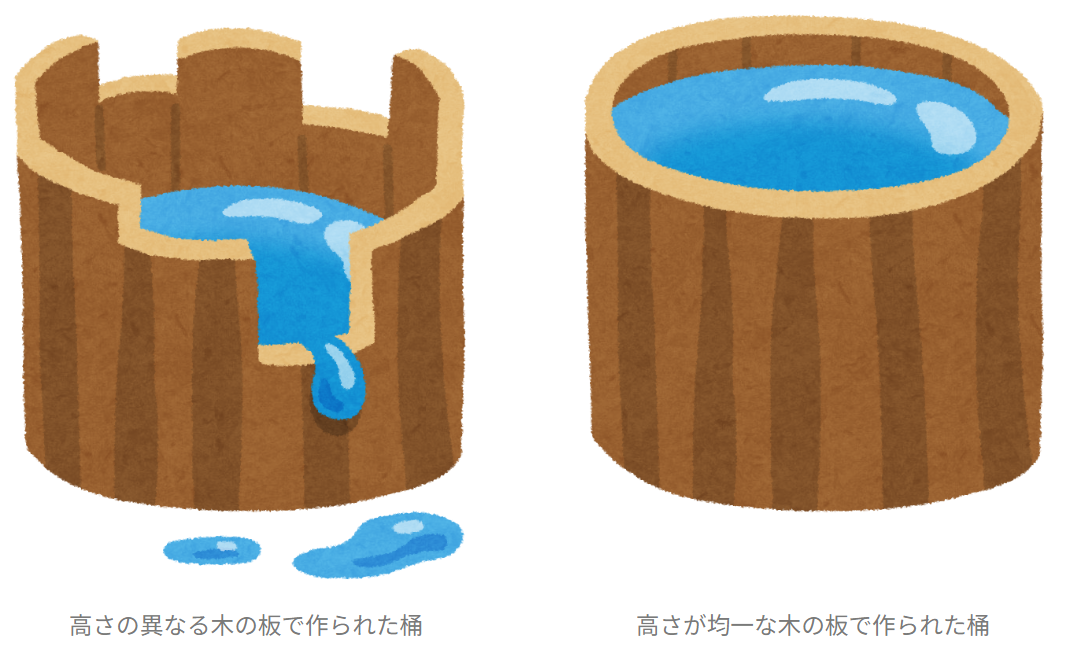
< SDGs > Goal Seventeen : Partnerships for the goals
「日本はお金がないのに、なぜよその国を援助するのですか?」と聞かれることがあります。
“Why does Japan, with no money, help other countries?” people ask.
第二次世界大戦で日本が負けた後、大変な食料不足になったことがあります。
There was a severe food shortage in Japan
after losing World War II.
この時、世界からの援助で学校給食が実現し、そのおかげで生き延びた子どもたちがいました。
At that time, school meals were realized with the help of the world,
and thanks to that, children survived.
それが、あなたのおじいさんやおばあさんです。
They are your grandparents.
もし外国からの援助がなければ、あなたはこの世に生まれていなかったかもしれないのです。
Without foreign aid, you might not have been born.
その後日本が豊かになるにつれ、今度は援助する側にまわりました。
As Japan became affluent, it started to provide aid.
長年にわたって東南アジアは発展し、今、日本製品を大量に買ってくれたり、大勢の人が日本に旅行に来てくれたりする豊かな地域になっています。
Over the years, Southeast Asia developed into
a wealthy region that now buys a lot of Japanese products
and sends many tourists to Japan.
他人のために尽くすと、回りまわって、自分のためにもなるのです。
Helping others ultimately helps oneself.
日本にはこんな諺があります、「情けは人のためならず」。
There is a saying in Japan,
“Kindness is not just for others.”
お返しを期待したわけではなく、純粋に相手のためにしていたことが、知らず知らず自分のためにもなっていたという意味です。
It means that what was done purely for someone
else unknowingly also benefits oneself.
これは身の回りだけでなく、地球という大きな社会でもあてはまります。
This is true not only in our immediate surroundings
but also in the larger society of the planet.
先進国が発展途上国を支援しても見返りが得られないように見えるかもしれません。
It may seem that developed countries
supporting developing countries do not receive a return.
しかし、気候変動やエネルギーなど地球規模で取り組まなければならない問題には、発展途上国の発展と参加が必要です。
However, for issues like
climate change and energy that require global action,
the development and participation of developing countries are necessary.
つまり、発展途上国への援助は、先進国の問題へのアプローチでもあるのです。
Therefore, assistance to developing countries is also
an approach to problems concerning developed countries.
人がたった一人では生きられないのと同じく、どんなに強い国も一つの国だけではやっていけません。
Just as a person cannot live alone,
no matter how strong a country is, it cannot survive alone.
国同士、人同士がパートナーとして手を取り合う意味がここに見えてくるのです。
This is where we see the meaning of
countries and people coming together as partners.
『世界がぐっと近くなるSDGsとボクらをつなぐ本』の中で、グローバル・パートナーシップについて、ジャーナリストでテレビ司会者の池上彰は以上のように説いています。
In the book
“The World Comes Closer: A Book Connecting Us to the SDGs,”
journalist and television presenter Akira Ikegami
explains global partnerships in this way.
遠くの世界の話に感じてしまうSDGsのことを、自分事として考えることができるようになることを願って。
He hopes that we can come to think of the SDGs,
which may seem like distant world’s concerns,
as our own personal matter.
SDGsとは、人類がこの地球で暮らし続けていくために、2030年までに達成すべき目標なのです。
The Sustainable Development Goals (SDGs) are objectives that
humanity should achieve by twenty thirty
in order to continue living on this planet.
